| ID |
Date |
Author |
Project |
Subject |
Run Number |
Events |
StartTime |
EndTime |
Data |
|
21
|
Mon Oct 3 20:30:14 2011 |
Thomas Bergauer | common | XY Tisch | | | | | | Grosser (DESY) Tisch: x = -342.0 y = 343.0 (Einheiten unbekannt, möglicherweise mm)
Raten-Scan siehe gescannter Zettel im Attachment.
erster Wert: X, also horizontal (positive Zahlen: Saleve side = Restaurant Nr. 3)
zweiter Wert: Z, also Höhe (positive Zahlen nach unten)
Micron DUT: X:324, Z:103 [Einheiten in mm]
configuration: IP-Address 192.168.0.13; 2 Achsen |
| Attachment 1: xy-tisch-control.JPG
| 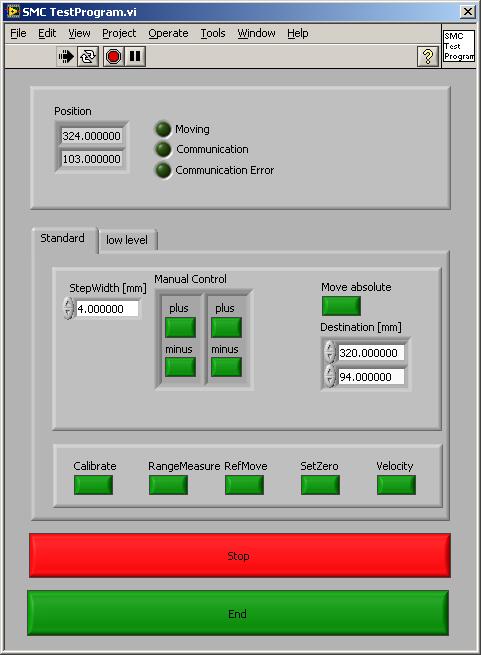 |
| Attachment 2: desy_xy_table.jpg
| 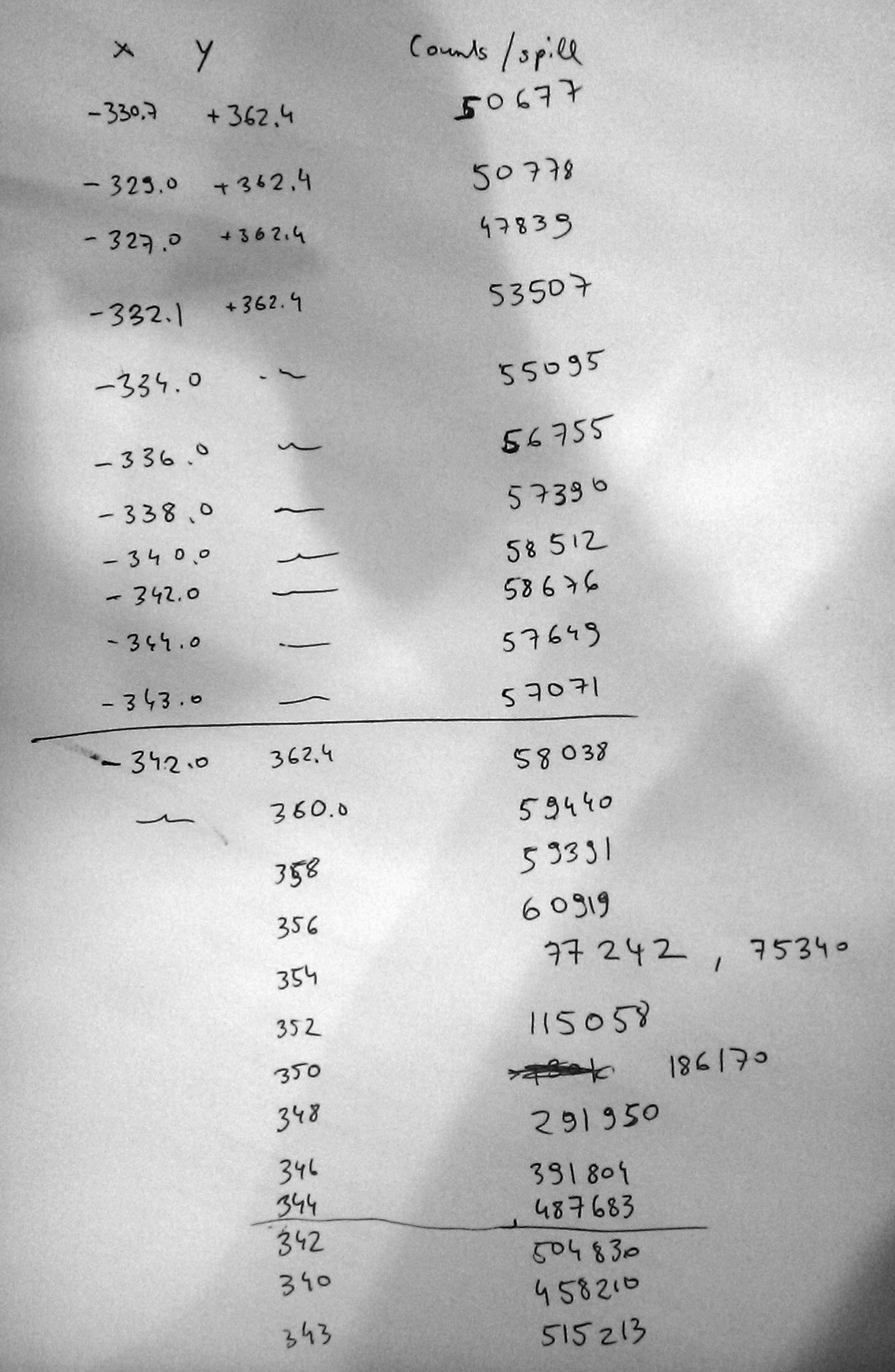 |
|
36
|
Wed Oct 5 19:33:40 2011 |
Markus Friedl | common | Trigger condition | | | 4.10.2011 15:00 | | | Changed trigger such that off-spill scintillator triggers are vetoed.
Inserted Flip-Flop which is set by begin of spill (WWE) and reset by end of spill signal (EE). Out-bar is put in coincidence with the scintillator trigger.
This also changes the timing, which was unfortunately not detected until 30 hours later. Thus, runs 4-7 have bad (wrong) timing -> UNUSABLE |
| Attachment 1: trigger_path_with_veto.png
| 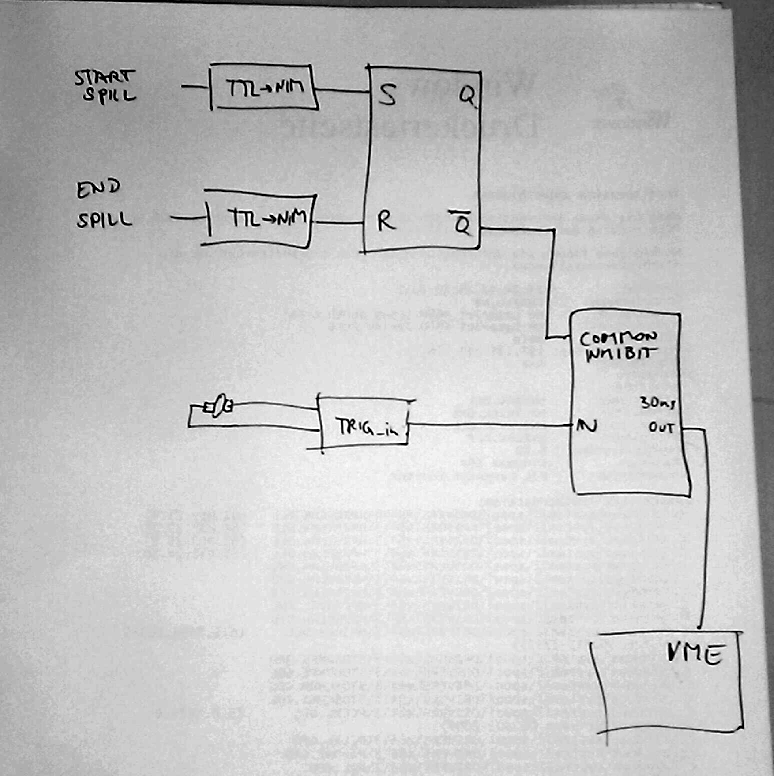 |
|
45
|
Fri Oct 7 18:28:53 2011 |
Christian Irmler | common | run schedule | | | | | Unknown | |
| Attachment 1: run_schedule.pdf
|
| Attachment 2: run_schedule.xlsx
|
|
64
|
Mon Oct 10 12:16:06 2011 |
Marko Dragicevic | common | Beam Profile and Magnet BeamRef Settings | | | | | Unknown | Beam Profile from H6A, 10.10.2011 11:40
BeamRef settings for all magnets, File H6B.702 |
| Attachment 1: BeamProfile.png
|  |
| Attachment 2: MagentBeamRefs.png
|  |
|
70
|
Thu Oct 13 13:08:38 2011 |
Thomas Bergauer | common | end of success | | | | | Unknown | |
|
71
|
Thu Oct 20 11:49:14 2011 |
Markus Friedl | common | Scintillator dimensions | | | | | Good | |
| Attachment 1: bhihagag.jpg
| 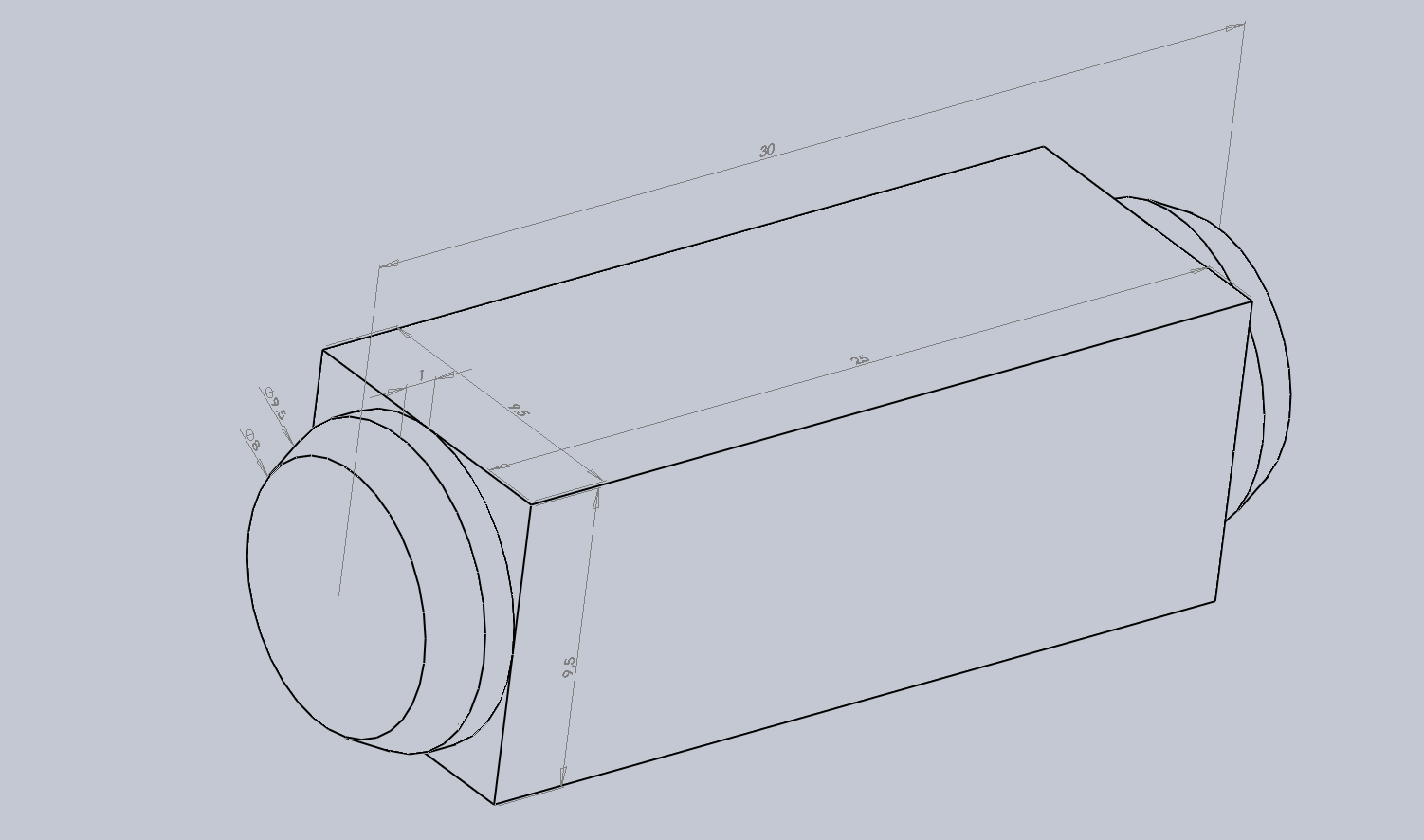 |
| Attachment 2: bdgaegba.jpg
| 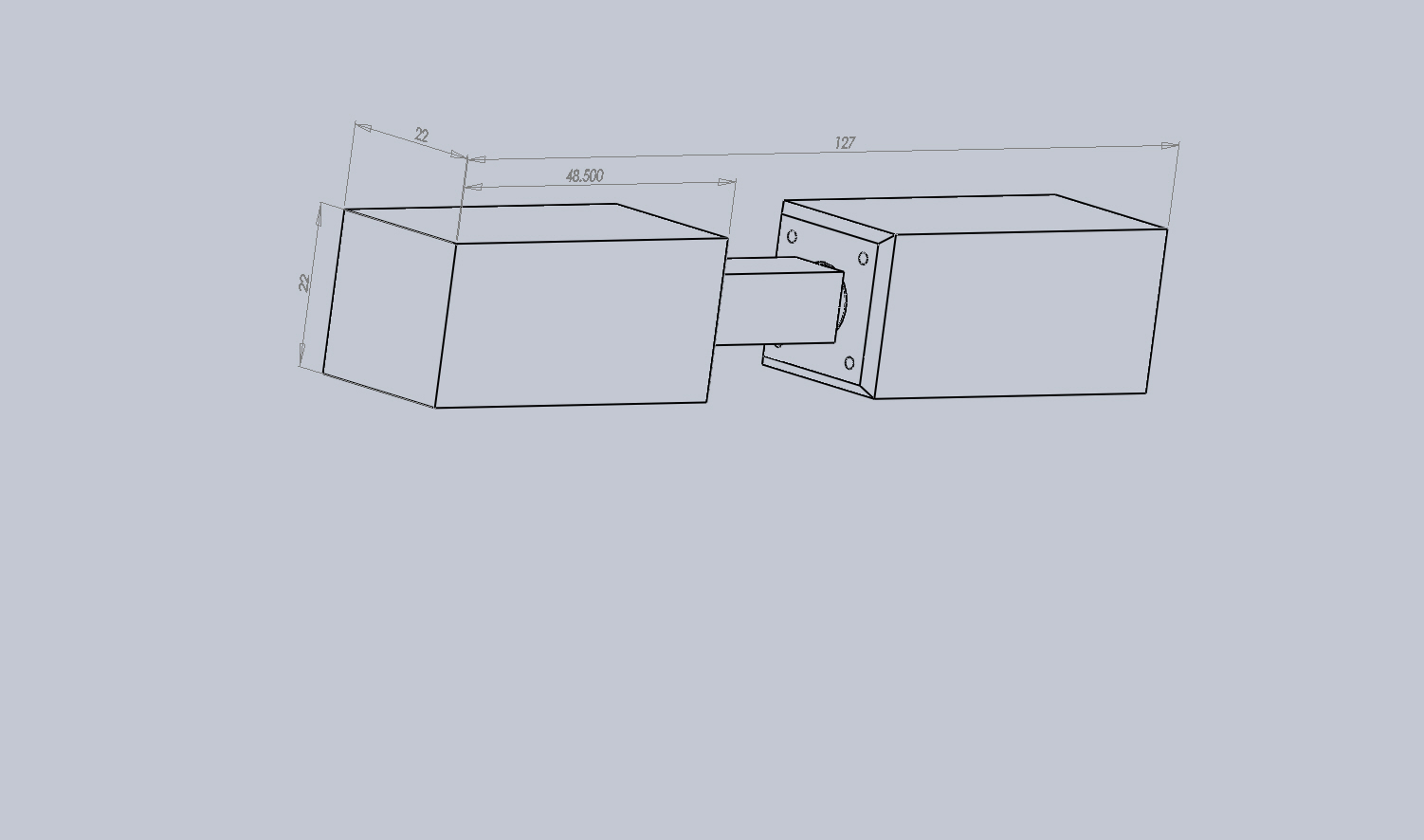 |
|
8
|
Fri Sep 16 11:01:15 2011 |
Manfred Valentan | Micron | Micron Baby Modules | | | | | | Irradiated modules from last year:
COMB-IRRAD: B2Micron_2826_19_Baby4: combined p-stop, intermediate strips (was DUT4)
COMM-IRRAD: B2Micron_2826_07_Baby2: common p-stop, intermediate strips (was DUT3)
(the irradiated atoll p-stop sensor was destroyed for electron microscopy and SRP)
Unirradiated modules from last year:
COMB-1: B2Micron_2826_01_Baby4: combined p-stop, intermediate strips (was TRK6)
COMM-1: B2Micron_2826_19_Baby2: common p-stop, intermediate strips (was TRK7)
ATOLL-1: B2Micron_2826_07_Baby3: atoll p-stop, intermediate strips (was prepared, but not used in the beam test)
New modules:
SPRAY-I-1: B2Micron_2825_15_Baby2: p-spray, intermediate strips
SPRAY-I-2: B2Micron_2825_15_Baby3: p-spray, intermediate strips
SPRAY-1: B2Micron_2825_05_Baby3: p-spray, no intermediate strips
SPRAY-2: B2Micron_2825_05_Baby4: p-spray, no intermediate strips
COMB-2: B2Micron_2826_17_Baby4: combined p-stop, intermediate strips
COMM-2: B2Micron_2826_17_Baby2: common p-stop, intermediate strips
ATOLL-2: B2Micron_2826_17_Baby3: atoll p-stop, intermediate strips
|
|
9
|
Mon Sep 19 17:38:34 2011 |
Manfred Valentan | Micron | Module ATOLL-2 | | | | | | Sensor: B2Micron_2826_17_Baby3
p-stop: Atoll, with intermediate strips
Hybrid p-side: H35 (reused from last year)
Hybrid n-side: MB3 |
|
10
|
Mon Sep 19 17:39:09 2011 |
Manfred Valentan | Micron | Module COMM-2 | | | | | | Sensor: B2Micron_2826_17_Baby2
p-stop: Common, with intermediate strips
Hybrid p-side: H34 (reused from last year)
Hybrid n-side: MB4 |
|
11
|
Mon Sep 19 17:39:55 2011 |
Manfred Valentan | Micron | Module COMB-2 | | | | | | Sensor: B2Micron_2826_17_Baby4
p-stop: Combined with intermediate strips
Hybrid p-side: H42 (reused from last year)
Hybrid n-side: MB3 |
|
12
|
Mon Sep 19 17:40:47 2011 |
Manfred Valentan | Micron | Module SPRAY-2 | | | | | | Sensor: B2Micron_2825_05_Baby4
p-stop: p-spray WITHOUT intermediate strips
Hybrid p-side: H44 (reused from last year)
Hybrid n-side: MB6 |
|
13
|
Mon Sep 19 17:41:27 2011 |
Manfred Valentan | Micron | Module SPRAY-I-2 | | | | | | Sensor: B2Micron_2825_15_Baby3
p-stop: p-spray WITH intermediate strips
Hybrid p-side: H43 (reused from last year)
Hybrid n-side: MB7 |
|
14
|
Mon Sep 19 17:42:01 2011 |
Manfred Valentan | Micron | Module SPRAY-1 | | | | | | Sensor: B2Micron_2825_05_Baby3
p-stop: p-spray WITHOUT intermediate strips
Hybrid p-side: H32 (reused from last year)
Hybrid n-side: MB8 |
|
15
|
Mon Sep 19 17:42:39 2011 |
Manfred Valentan | Micron | Module SPRAY-I-1 | | | | | | Sensor: B2Micron_2825_15_Baby2
p-stop: p-spray WITH intermediate strips
Hybrid p-side: MB1
Hybrid n-side: MB9 |
|
16
|
Mon Sep 19 17:44:00 2011 |
Manfred Valentan | Micron | Module COMM-1 | | | | | | Sensor: B2Micron_2826_19_Baby2 (reused from last year, was TRK7)
p-stop: Common, with intermediate strips
Hybrid p-side: H46
Hybrid n-side: M37 |
|
17
|
Mon Sep 19 17:44:39 2011 |
Manfred Valentan | Micron | Module COMB-1 | | | | | | Sensor: B2Micron_2826_01_Baby4 (reused from last year, was TRK6)
p-stop: Combined, with intermediate strips
Hybrid p-side: H45
Hybrid n-side: M36 |
|
18
|
Mon Sep 19 17:46:07 2011 |
Manfred Valentan | Micron | Module ATOLL-1 | | | | | | Sensor: B2Micron_2826_07_Baby3 (reused from last year, but was not used in beam test SPS2010)
p-stop: Atoll, with intermediate strips
Hybrid p-side: H40
Hybrid n-side: M30 |
|
19
|
Mon Sep 19 17:47:11 2011 |
Manfred Valentan | Micron | Module COMB-IRRAD | | | | | | Sensor: B2Micron_2826_19_Baby4 (reused from last year, was DUT4, module is irradiated to 700 kGy)
p-stop: Combined, with intermediate strips, irradiated
Hybrid p-side: H48
Hybrid n-side: M35 |
|
20
|
Mon Sep 19 17:47:50 2011 |
Manfred Valentan | Micron | Module COMM-IRRAD | | | | | | Sensor: B2Micron_2826_07_Baby2 (reused from last year, was DUT3, module is irradiated to 700 kGy)
p-stop: Common, with intermediate strips, irradiated
Hybrid p-side: H41
Hybrid n-side: M31 |
|
22
|
Mon Oct 3 21:01:00 2011 |
Manfred Valentan | Micron | Micron-Baby-Stack p-stop, zones n & h-n | run001 | 200k | 03.10.2011 20:54:22 | 03.10.2011 23:25:47 | Good | hit modules in top right corner -> Zones narrow and half-narrow for all modules
Position of HEPHY x-z-table:
x = 324
z = 103 |
|
23
|
Mon Oct 3 21:08:27 2011 |
Manfred Valentan | Micron | Micron-Baby-Stack p-stop, configuration | | | | | | Photo of hand-drawn stack configuration, config files |
| Attachment 1: Micron-Baby-Stack_p-stop.png
|  |
| Attachment 2: cern11_micronbaby_pstop_single.cfg
|
# 40 mhz
# single peak mode (1 sample)
# 50ns peaking time
# 30ns trigger window (built from 5ns window, thus ~12.5ns later)
# NECO
#
# Data processing with FADC+PROC
# FADC 0 = p-side ch 4-7 origami;
# FADC 1 = n-side ch 4-7 origami;
#
# CERN SPS testbeam 2011
# micron baby stack with p-stop sensors
#
# CI 3 Oct 2011
#
#
# Lines preceded by a # or ; sign are ignored.
#
# [rem] comments a whole section until the next section start marked by [xxx] .
#
# [vme]
# VME addresses are given in the format
# {module_name} = {vme_module_number},{vme_address_hex}
# nec ... NECO module
# adf ... particular FADC module
#
# Please note that the address ranges are not defined here,
# they are implicitly given by the hardware.
# Module numbers must fill from 0 (this is not checked).
# Please note that no range checking is performed.
# There is no access to VME modules that are not included in this list,
[vme]
nec = 0,0x1a000000
adf = 0,0x1b000000
adf = 1,0x2b000000
# [nec]
# NECO related information
# mod = 0|1,{shift_register_delay},{adc_range},{win_delay},{win_length},{dead_time},{time_lat},{max_trg}
# (default: 0,75,0,50?,900?,36,2,1)
# res = {list of entries in reset sequence} (default: 2,4)
# cal = {list of entries in cal sequence} (default: 2,3,250,251)
# sw5 = {list of entries in single cal sequence} (default: 2,3)
# str = {list of entries in software trigger sequence} (default: 75)
# htr = {list of entries in hardware trigger sequence} (default: 74)
#
# mod specifies to use either the sequencer (0) or the shift register (1) for hardware trigger and the
# delay of the shift register (0..255); adc_range (0=1Vpp, 1=2Vpp) -- ignored; win_delay and win_length define
# the starting point (relative to the APV trigger) and length of the ADC gate in transparent mode; dead_time is
# the number of 254MHz clock cycles which are set to zero for time measurement after an incoming trigger;
# time_lat is the latency for time measurement in terms of 40MHz clock cycles; max_trg is the number of incoming
# triggers which required to activate the veto logic (usually 1; 0 completely disables the veto logic)
# res, cal, sw5, str and htr are containing the bits to set in the 256-element sequencer memory (nothing is set at -1)
# Please note that cal+str together produce a calibration request plus subsequent normal trigger, so the time
# between them is the latency. sw5 is used to send a single cal request to achieve the correct polarity in
# case the APV inverter is turned on (this feature only works for entire MAMBOs halves = groups of 3 REBOs)
#
# These settings are quite fragile! Do not modify until you know exactly what you are doing.
[nec]
# 30m cables, 40mhz, Tp=50ns, single-trigger
mod = 0,75,0,70,250,36,2,1
htr = 63,-1,-1,-1,-1,-1,-1,-1
str = 100,-1,-1,-1,-1,-1,-1,-1
# TESTBEAM May 08, 30m cables, 40mhz, Tp=50ns, multi-trigger (6 samples)
#mod = 0,75,0,70,950,36,2,1
#htr = 61,64,-1,-1,-1,-1,-1,-1
#str = 100,103,-1,-1,-1,-1,-1,-1
#common settings
res = 2, 4, -1, -1,-1,-1,-1,-1
cal = 2, 3,250,251,-1,-1,-1,-1
sw5 = 2, 3, -1, -1,-1,-1,-1,-1
# [daq]
# DAQ related specifications are given in the format
# ads = {N},{search_max_subevents},0,x
# ini = {initevents},{readout_mode},0,x
# deh = {module_position},{apv_position},0,x
# i2t = {N},0,0,x
# pat = 0,0,0,{data_file_path}
# clk = {N},{Delay25 frequency range},0,x
# pdl = {Trigger input delay},0,0,x
# crd = {crate_number},{clkdel},{trgdel},x
#
# ads N gives the number of samples that are read out from the FIFO1 in transparent mode, search_max_subevents is the
# maximum number of subevents to search for within one ADC stream (default=1).
# ini: initevents is the number of software triggers in the beginning of a run for pedestal and noise
# evaluation. At the beginning of each run, 2*initevents are generated by software, after that the
# selected trigger source (hardware, software of calibration) is activated. The initial evaluation
# events are written to disk as normal events are.
# ini: readout_mode defines whether events beyond the initevents are read in raw transparent mode from FIFO1 (0) or
# in processed mode (1) where only hit information is read from FIFO3
# deh is the APV chip for which single strip histograms are recorded
# i2t is the maximum number of I2C retries in case of failure
# pat specifies the save path for data files (must include a trailing backslash!)
# clk gives the system clock period in integer ns (25 max.) and the frequency range for the Delay25 chip:
# 0...40 MHz, 1...80 MHz, 2...32 MHz, 3...64 MHz
# pdl specifies the delay setting for the trigger input in 0.5ns steps (0..49)
# crd define the global clock and trigger delays between NECO and SVD3_buffer for crates 0 and 1
# NOTE: clock and trigger is NOT propagated to any crate(s) NOT specified here
[daq]
# TESTBEAM May 08
#Standard
ads = 250,1,0,x
# TESTBEAM May 08
#Multitrigger (6)
#ads = 950,6,0,x
# RAW (transparent mode) readout
ini = 300,0,0,x
# PROCESSED readout
#ini = 300,1,0,x
deh = 1,0,0,x
i2t = 5,0,0,x
pat = 0,0,0,D:\cern11\micronbaby\data
#standard 40mhz clock (25ns)
clk = 25,0,0,x
pdl = 25,0,0,x
#crate distribution delays (set to mid-range to allow adjustments in both directions)
crd = 0,25,25,x
#we don't use crate 1, so we don't set any delay here -> no clock/trigger to crate 1
###crd = 1,25,25,x
# [hit]
# Hit recognition variables are specified here
# hcs = {hitcut_seed_strip},{hitcut_neighbor_strips}
# nok = {x.x},0
#
#
# hcs gives seed and neighbor hit cuts in units of strip sigma
# nok states the threshold over average noise at which strips are excluded from further analysis (to exclude noisy strips)
[hit]
# si sensor
hcs = 4.0,4.0
# do not exclude strips
nok = 2000.0,0
# [cal]
# Calibration related data
# lvl = {level},0
# lat = {latbeg},{latend}
# sam = {average_samples},{number of samples in 6-tuple mode}
# grp = {number_of_groups},0
# lg6 = {latency},{group}
# lv6 = {startlevel},{endlevel}
#
# lvl is the CLVL amplitude (0..255), 1 is 625e-, 36 is 1 MIP (22500e-) nominally, in reality 26 is 1 MIP
# lat is the Latency range to cover (latend-latbeg>=2, latend-latbeg<=15)
# sam is the number of samples to average per position for normal and 6-tuple modes
# grp is how many groups to scan (<=8), first group is strips 0,8,16,..., second group is 1,9,17,..., ...
# lg6 defines the latency in 6-tuple mode and which group to observe in that mode
# lv6 defines the scan range of amplitude in 6-tuple mode
[cal]
#real 1 MIP level (22400e)
lvl = 26,0
#real 5 MIPs level
#lvl = 130,0
#LAT=95/98 Calibration (short display)
#lat = 89,100
#LAT=95/98 Calibration (short display for >=50mhz)
#lat = 81,98
#LAT=95/98 Calibration (long peak mode tail display)
lat = 75,100
#common settings
sam = 50,500
grp = 8,0
#6-tuple mode settings
lg6 = 97, 1
lv6 = 1,200
# [i2c]
# This section defines one or more I2C sets for the APV25. In the [mod] section, those sets are referenced to by their number.
# ia2 = {number},{mode},{lat},{ipre},{ipcasc},{ipsf},{isha},{issf},{ipsp},{imuxin},{vfp},{vfs},{vpsp},{muxgain}
#
# The I2C settings must be individually numbered (ascending from 0). The easiest case is to use the same
# settings for all chips of one type, but one could go so far to use separate settings for each chip.
# vadj/vpsp is set individually for each apv in the [mod] section, the value specified here is meaningless.
[i2c]
# apv25s1, peak, inverter ON, Tp=50ns, (p side)
ia2 = 0, 63, 95, 98, 52, 34, 34, 34, 55, 34, 30, 60, 0, 4
# apv25s1, peak, inverter OFF, Tp=50ns, (n side)
ia2 = 1, 31, 95, 98, 52, 34, 34, 34, 55, 34, 30, 60, 0, 4
# apv25s1, multi-peak, inverter ON, Tp=50ns, (p side)
#ia2 = 0, 61, 95, 98, 52, 34, 34, 34, 55, 34, 30, 60, 0, 4
# apv25s1, multi-peak, inverter OFF, Tp=50ns, (n side)
#ia2 = 1, 29, 95, 98, 52, 34, 34, 34, 55, 34, 30, 60, 0, 4
# [mod]
# Detector module (actually hybrid) specifications are given in the format
# mod = {module_position},{crate_number},{mambo_number},{rebo_number},{hybrid_number},m,{AD8128_peak},{rebo_clkdelay},{rebo_trgdelay},0,0,0,0,{Name}
# apv = {module_position},{apv_position},{i2c_address},{i2c_settings},{vadj/vpsp},x,0,0,{fadc_offset},{fadc_number},{fadc_channel},{fadc_clkdelay [0..49]},{AD8128_gain},x
#
# mod gives the hybrid/module properties: The position counts from 0 to 7 in beam direction,
# Name must not contain blanks ("_" is allowed).
# apv describes the chips located on a hybrid
# and the ADC channel where they are read out, either a Vienna ADC (a) or a FED (f).
# The ADC offset is only available with the Vienna ADCs and shifts the baseline.
# The individual chip vadj setting dominates over the [i2c] setting.
[mod]
# mambo 0
mod = 0,0,0,2,0,m,45,25,0,0,0,0,0, atoll-2
apv = 0,0,38,1,30,x,0,0,5,0,2,22,100,x
apv = 0,1,40,1,30,x,0,0,5,0,3,16,100,x
mod = 1,0,0,2,1,m,45,25,0,0,0,0,0, comb-2
apv = 1,0,38,1,30,x,0,0,5,0,6,26,100,x
apv = 1,1,40,1,30,x,0,0,5,0,7,22,100,x
mod = 2,0,0,2,2,m,45,25,0,0,0,0,0, comm-2
apv = 2,0,38,1,30,x,0,0,5,0,10,25,100,x
apv = 2,1,40,1,30,x,0,0,5,0,11,25,100,x
mod = 3,0,0,2,3,m,45,25,0,0,0,0,0, atoll-1
apv = 3,0,38,1,30,x,0,0,5,0,14,25,100,x
apv = 3,1,40,1,30,x,0,0,5,0,15,20,100,x
# mambo 1
mod = 4,0,1,1,0,m,45,25,0,0,0,0,0, comb-1
apv = 4,0,38,1,30,x,0,0,120,1,2,22,100,x
apv = 4,1,40,1,30,x,0,0,120,1,3,20,100,x
mod = 5,0,1,1,1,m,45,25,0,0,0,0,0, comm-1
apv = 5,0,38,1,30,x,0,0,120,1,6,22,100,x
apv = 5,1,40,1,30,x,0,0,120,1,7,18,100,x
# [bad]
# Bad channels description table
# bad = {module_position},{apv_position},{List of 18 strip values or -1}
#
# Maps bad channels, which are then excluded from hit search. Up to 18 bad strips can be entered per line,
# more lines per APV are allowed. Unused values in the list must be filled with -1
[bad]
#### atoll-2 ####
# every second channel is removed at sensor side --> noisy --> bad
bad = 0,0,0, 2, 4, 6, 8, 10, 12, 14, 16, 18, 20,22,24,26,28, 30, 32, 34
bad = 0,0,36, 38, 40, 42, 44, 46, 48, 50, 52, 54, 56,58,60,62,64, 66, 68, 70
bad = 0,0,72, 74, 76, 78, 80, 82, 84, 86, 88, 90, 92,94,96,98,100,102,104,106
bad = 0,0,108,110,112,114,116,118,120,122,124,126,-1,-1,-1,-1,-1, -1, -1, -1
bad = 0,1,0, 2, 4, 6, 8, 10, 12, 14, 16, 18, 20,22,24,26,28, 30, 32, 34
bad = 0,1,36, 38, 40, 42, 44, 46, 48, 50, 52, 54, 56,58,60,62,64, 66, 68, 70
bad = 0,1,72, 74, 76, 78, 80, 82, 84, 86, 88, 90, 92,94,96,98,100,102,104,106
bad = 0,1,108,110,112,114,116,118,120,122,124,126,-1,-1,-1,-1,-1, -1, -1, -1
#### comb-2 ####
# every second channel is removed at sensor side --> noisy --> bad
bad = 1,0,0, 2, 4, 6, 8, 10, 12, 14, 16, 18, 20,22,24,26,28, 30, 32, 34
bad = 1,0,36, 38, 40, 42, 44, 46, 48, 50, 52, 54, 56,58,60,62,64, 66, 68, 70
bad = 1,0,72, 74, 76, 78, 80, 82, 84, 86, 88, 90, 92,94,96,98,100,102,104,106
bad = 1,0,108,110,112,114,116,118,120,122,124,126,-1,-1,-1,-1,-1, -1, -1, -1
bad = 1,1,0, 2, 4, 6, 8, 10, 12, 14, 16, 18, 20,22,24,26,28, 30, 32, 34
bad = 1,1,36, 38, 40, 42, 44, 46, 48, 50, 52, 54, 56,58,60,62,64, 66, 68, 70
bad = 1,1,72, 74, 76, 78, 80, 82, 84, 86, 88, 90, 92,94,96,98,100,102,104,106
bad = 1,1,108,110,112,114,116,118,120,122,124,126,-1,-1,-1,-1,-1, -1, -1, -1
#### comm-2 ####
# every second channel is removed at sensor side --> noisy --> bad
bad = 2,0,0, 2, 4, 6, 8, 10, 12, 14, 16, 18, 20,22,24,26,28, 30, 32, 34
... 104 more lines ...
|
| Attachment 3: cern11_micronbaby_pstop_multi6.cfg
|
# 40 mhz
# multi peak mode (6 samples)
# 50ns peaking time
# 30ns trigger window (built from 5ns window, thus ~12.5ns later)
# NECO
#
# Data processing with FADC+PROC
# FADC 0 = p-side ch 4-7 origami;
# FADC 1 = n-side ch 4-7 origami;
#
# CERN SPS testbeam 2011
# micron baby stack with p-stop sensors
#
# CI 3 Oct 2011
#
#
# Lines preceded by a # or ; sign are ignored.
#
# [rem] comments a whole section until the next section start marked by [xxx] .
#
# [vme]
# VME addresses are given in the format
# {module_name} = {vme_module_number},{vme_address_hex}
# nec ... NECO module
# adf ... particular FADC module
#
# Please note that the address ranges are not defined here,
# they are implicitly given by the hardware.
# Module numbers must fill from 0 (this is not checked).
# Please note that no range checking is performed.
# There is no access to VME modules that are not included in this list,
[vme]
nec = 0,0x1a000000
adf = 0,0x1b000000
adf = 1,0x2b000000
# [nec]
# NECO related information
# mod = 0|1,{shift_register_delay},{adc_range},{win_delay},{win_length},{dead_time},{time_lat},{max_trg}
# (default: 0,75,0,50?,900?,36,2,1)
# res = {list of entries in reset sequence} (default: 2,4)
# cal = {list of entries in cal sequence} (default: 2,3,250,251)
# sw5 = {list of entries in single cal sequence} (default: 2,3)
# str = {list of entries in software trigger sequence} (default: 75)
# htr = {list of entries in hardware trigger sequence} (default: 74)
#
# mod specifies to use either the sequencer (0) or the shift register (1) for hardware trigger and the
# delay of the shift register (0..255); adc_range (0=1Vpp, 1=2Vpp) -- ignored; win_delay and win_length define
# the starting point (relative to the APV trigger) and length of the ADC gate in transparent mode; dead_time is
# the number of 254MHz clock cycles which are set to zero for time measurement after an incoming trigger;
# time_lat is the latency for time measurement in terms of 40MHz clock cycles; max_trg is the number of incoming
# triggers which required to activate the veto logic (usually 1; 0 completely disables the veto logic)
# res, cal, sw5, str and htr are containing the bits to set in the 256-element sequencer memory (nothing is set at -1)
# Please note that cal+str together produce a calibration request plus subsequent normal trigger, so the time
# between them is the latency. sw5 is used to send a single cal request to achieve the correct polarity in
# case the APV inverter is turned on (this feature only works for entire MAMBOs halves = groups of 3 REBOs)
#
# These settings are quite fragile! Do not modify until you know exactly what you are doing.
[nec]
# 30m cables, 40mhz, Tp=50ns, single-trigger
#mod = 0,75,0,70,250,36,2,1
#htr = 63,-1,-1,-1,-1,-1,-1,-1
#str = 100,-1,-1,-1,-1,-1,-1,-1
# TESTBEAM May 08, 30m cables, 40mhz, Tp=50ns, multi-trigger (6 samples)
mod = 0,75,0,70,950,36,2,1
htr = 58,61,-1,-1,-1,-1,-1,-1
str = 100,103,-1,-1,-1,-1,-1,-1
#common settings
res = 2, 4, -1, -1,-1,-1,-1,-1
cal = 2, 3,250,251,-1,-1,-1,-1
sw5 = 2, 3, -1, -1,-1,-1,-1,-1
# [daq]
# DAQ related specifications are given in the format
# ads = {N},{search_max_subevents},0,x
# ini = {initevents},{readout_mode},0,x
# deh = {module_position},{apv_position},0,x
# i2t = {N},0,0,x
# pat = 0,0,0,{data_file_path}
# clk = {N},{Delay25 frequency range},0,x
# pdl = {Trigger input delay},0,0,x
# crd = {crate_number},{clkdel},{trgdel},x
#
# ads N gives the number of samples that are read out from the FIFO1 in transparent mode, search_max_subevents is the
# maximum number of subevents to search for within one ADC stream (default=1).
# ini: initevents is the number of software triggers in the beginning of a run for pedestal and noise
# evaluation. At the beginning of each run, 2*initevents are generated by software, after that the
# selected trigger source (hardware, software of calibration) is activated. The initial evaluation
# events are written to disk as normal events are.
# ini: readout_mode defines whether events beyond the initevents are read in raw transparent mode from FIFO1 (0) or
# in processed mode (1) where only hit information is read from FIFO3
# deh is the APV chip for which single strip histograms are recorded
# i2t is the maximum number of I2C retries in case of failure
# pat specifies the save path for data files (must include a trailing backslash!)
# clk gives the system clock period in integer ns (25 max.) and the frequency range for the Delay25 chip:
# 0...40 MHz, 1...80 MHz, 2...32 MHz, 3...64 MHz
# pdl specifies the delay setting for the trigger input in 0.5ns steps (0..49)
# crd define the global clock and trigger delays between NECO and SVD3_buffer for crates 0 and 1
# NOTE: clock and trigger is NOT propagated to any crate(s) NOT specified here
[daq]
# TESTBEAM May 08
#Standard
#ads = 250,1,0,x
# TESTBEAM May 08
#Multitrigger (6)
ads = 950,6,0,x
# RAW (transparent mode) readout
ini = 300,0,0,x
# PROCESSED readout
#ini = 300,1,0,x
deh = 1,0,0,x
i2t = 5,0,0,x
pat = 0,0,0,D:\cern11\micronbaby\data
#standard 40mhz clock (25ns)
clk = 25,0,0,x
pdl = 25,0,0,x
#crate distribution delays (set to mid-range to allow adjustments in both directions)
crd = 0,25,25,x
#we don't use crate 1, so we don't set any delay here -> no clock/trigger to crate 1
###crd = 1,25,25,x
# [hit]
# Hit recognition variables are specified here
# hcs = {hitcut_seed_strip},{hitcut_neighbor_strips}
# nok = {x.x},0
#
#
# hcs gives seed and neighbor hit cuts in units of strip sigma
# nok states the threshold over average noise at which strips are excluded from further analysis (to exclude noisy strips)
[hit]
# si sensor
hcs = 4.0,4.0
# do not exclude strips
nok = 2000.0,0
# [cal]
# Calibration related data
# lvl = {level},0
# lat = {latbeg},{latend}
# sam = {average_samples},{number of samples in 6-tuple mode}
# grp = {number_of_groups},0
# lg6 = {latency},{group}
# lv6 = {startlevel},{endlevel}
#
# lvl is the CLVL amplitude (0..255), 1 is 625e-, 36 is 1 MIP (22500e-) nominally, in reality 26 is 1 MIP
# lat is the Latency range to cover (latend-latbeg>=2, latend-latbeg<=15)
# sam is the number of samples to average per position for normal and 6-tuple modes
# grp is how many groups to scan (<=8), first group is strips 0,8,16,..., second group is 1,9,17,..., ...
# lg6 defines the latency in 6-tuple mode and which group to observe in that mode
# lv6 defines the scan range of amplitude in 6-tuple mode
[cal]
#real 1 MIP level (22400e)
lvl = 26,0
#real 5 MIPs level
#lvl = 130,0
#LAT=95/98 Calibration (short display)
#lat = 89,100
#LAT=95/98 Calibration (short display for >=50mhz)
#lat = 81,98
#LAT=95/98 Calibration (long peak mode tail display)
lat = 75,100
#common settings
sam = 50,500
grp = 8,0
#6-tuple mode settings
lg6 = 97, 1
lv6 = 1,200
# [i2c]
# This section defines one or more I2C sets for the APV25. In the [mod] section, those sets are referenced to by their number.
# ia2 = {number},{mode},{lat},{ipre},{ipcasc},{ipsf},{isha},{issf},{ipsp},{imuxin},{vfp},{vfs},{vpsp},{muxgain}
#
# The I2C settings must be individually numbered (ascending from 0). The easiest case is to use the same
# settings for all chips of one type, but one could go so far to use separate settings for each chip.
# vadj/vpsp is set individually for each apv in the [mod] section, the value specified here is meaningless.
[i2c]
# apv25s1, peak, inverter ON, Tp=50ns, (p side)
#ia2 = 0, 63, 95, 98, 52, 34, 34, 34, 55, 34, 30, 60, 0, 4
# apv25s1, peak, inverter OFF, Tp=50ns, (n side)
#ia2 = 1, 31, 95, 98, 52, 34, 34, 34, 55, 34, 30, 60, 0, 4
# apv25s1, multi-peak, inverter ON, Tp=50ns, (p side)
ia2 = 0, 61, 95, 98, 52, 34, 34, 34, 55, 34, 30, 60, 0, 4
# apv25s1, multi-peak, inverter OFF, Tp=50ns, (n side)
ia2 = 1, 29, 95, 98, 52, 34, 34, 34, 55, 34, 30, 60, 0, 4
# [mod]
# Detector module (actually hybrid) specifications are given in the format
# mod = {module_position},{crate_number},{mambo_number},{rebo_number},{hybrid_number},m,{AD8128_peak},{rebo_clkdelay},{rebo_trgdelay},0,0,0,0,{Name}
# apv = {module_position},{apv_position},{i2c_address},{i2c_settings},{vadj/vpsp},x,0,0,{fadc_offset},{fadc_number},{fadc_channel},{fadc_clkdelay [0..49]},{AD8128_gain},x
#
# mod gives the hybrid/module properties: The position counts from 0 to 7 in beam direction,
# Name must not contain blanks ("_" is allowed).
# apv describes the chips located on a hybrid
# and the ADC channel where they are read out, either a Vienna ADC (a) or a FED (f).
# The ADC offset is only available with the Vienna ADCs and shifts the baseline.
# The individual chip vadj setting dominates over the [i2c] setting.
[mod]
# mambo 0
mod = 0,0,0,2,0,m,45,25,0,0,0,0,0, atoll-2
apv = 0,0,38,1,30,x,0,0,5,0,2,22,100,x
apv = 0,1,40,1,30,x,0,0,5,0,3,16,100,x
mod = 1,0,0,2,1,m,45,25,0,0,0,0,0, comb-2
apv = 1,0,38,1,30,x,0,0,5,0,6,26,100,x
apv = 1,1,40,1,30,x,0,0,5,0,7,22,100,x
mod = 2,0,0,2,2,m,45,25,0,0,0,0,0, comm-2
apv = 2,0,38,1,30,x,0,0,5,0,10,25,100,x
apv = 2,1,40,1,30,x,0,0,5,0,11,25,100,x
mod = 3,0,0,2,3,m,45,25,0,0,0,0,0, atoll-1
apv = 3,0,38,1,30,x,0,0,5,0,14,25,100,x
apv = 3,1,40,1,30,x,0,0,5,0,15,20,100,x
# mambo 1
mod = 4,0,1,1,0,m,45,25,0,0,0,0,0, comb-1
apv = 4,0,38,1,30,x,0,0,120,1,2,22,100,x
apv = 4,1,40,1,30,x,0,0,120,1,3,20,100,x
mod = 5,0,1,1,1,m,45,25,0,0,0,0,0, comm-1
apv = 5,0,38,1,30,x,0,0,120,1,6,22,100,x
apv = 5,1,40,1,30,x,0,0,120,1,7,18,100,x
# [bad]
# Bad channels description table
# bad = {module_position},{apv_position},{List of 18 strip values or -1}
#
# Maps bad channels, which are then excluded from hit search. Up to 18 bad strips can be entered per line,
# more lines per APV are allowed. Unused values in the list must be filled with -1
[bad]
#### atoll-2 ####
# every second channel is removed at sensor side --> noisy --> bad
bad = 0,0,0, 2, 4, 6, 8, 10, 12, 14, 16, 18, 20,22,24,26,28, 30, 32, 34
bad = 0,0,36, 38, 40, 42, 44, 46, 48, 50, 52, 54, 56,58,60,62,64, 66, 68, 70
bad = 0,0,72, 74, 76, 78, 80, 82, 84, 86, 88, 90, 92,94,96,98,100,102,104,106
bad = 0,0,108,110,112,114,116,118,120,122,124,126,-1,-1,-1,-1,-1, -1, -1, -1
bad = 0,1,0, 2, 4, 6, 8, 10, 12, 14, 16, 18, 20,22,24,26,28, 30, 32, 34
bad = 0,1,36, 38, 40, 42, 44, 46, 48, 50, 52, 54, 56,58,60,62,64, 66, 68, 70
bad = 0,1,72, 74, 76, 78, 80, 82, 84, 86, 88, 90, 92,94,96,98,100,102,104,106
bad = 0,1,108,110,112,114,116,118,120,122,124,126,-1,-1,-1,-1,-1, -1, -1, -1
#### comb-2 ####
# every second channel is removed at sensor side --> noisy --> bad
bad = 1,0,0, 2, 4, 6, 8, 10, 12, 14, 16, 18, 20,22,24,26,28, 30, 32, 34
bad = 1,0,36, 38, 40, 42, 44, 46, 48, 50, 52, 54, 56,58,60,62,64, 66, 68, 70
bad = 1,0,72, 74, 76, 78, 80, 82, 84, 86, 88, 90, 92,94,96,98,100,102,104,106
bad = 1,0,108,110,112,114,116,118,120,122,124,126,-1,-1,-1,-1,-1, -1, -1, -1
bad = 1,1,0, 2, 4, 6, 8, 10, 12, 14, 16, 18, 20,22,24,26,28, 30, 32, 34
bad = 1,1,36, 38, 40, 42, 44, 46, 48, 50, 52, 54, 56,58,60,62,64, 66, 68, 70
bad = 1,1,72, 74, 76, 78, 80, 82, 84, 86, 88, 90, 92,94,96,98,100,102,104,106
bad = 1,1,108,110,112,114,116,118,120,122,124,126,-1,-1,-1,-1,-1, -1, -1, -1
#### comm-2 ####
# every second channel is removed at sensor side --> noisy --> bad
bad = 2,0,0, 2, 4, 6, 8, 10, 12, 14, 16, 18, 20,22,24,26,28, 30, 32, 34
... 104 more lines ...
|
|
24
|
Tue Oct 4 00:11:31 2011 |
Manfred Valentan | Micron | Micron-Baby-Stack p-stop, zones w & h-w | run002 | 760000 | 04.10.2011 00:11:06 | 04.10.2011 09:01:06 | Good | hit modules in bottom left corner -> Zones wide and half-wide for all modules
Position of HEPHY x-z-table:
x = 336
z = 89 |
|
25
|
Tue Oct 4 10:44:09 2011 |
Christian Irmler | Micron | Internal Calibration | cal002 | 83800 | 04.10.2011 10:04:49 | 04.10.2011 10:19:41 | | micronbaby p-spray/irrad
HV = -100V
beam on,
irrad APVs with standard baseline settings --> too high
APV #2 (I²C addr. 40) deactivated, latency error after initialization, reset line open? |
|
26
|
Tue Oct 4 10:44:48 2011 |
Christian Irmler | Micron | Internal Calibration | cal003 | 83800 | 04.10.2011 10:33:50 | 04.10.2011 10:48:51 | | micronbaby p-spray/irrad
HV = -100V
beam on, baseline of irrad APV reduced
APV #2 (I²C addr. 40) deactivated, latency error after initialization, reset line open? |
|
27
|
Tue Oct 4 10:47:59 2011 |
Manfred Valentan | Micron | Internal Calibration | cal001 | 83800 | 03.10.2011 20:34:48 | 03.10.2011 20:50:57 | | micronbaby p-stop stack
HV = -100V
beam on |
|
28
|
Tue Oct 4 15:16:06 2011 |
Manfred Valentan | Micron | Micron-Baby-Stack p-spray, run bottom left | run003 | 200k | 04.10.2011 11:29:19 | 04.10.2011 13:57:54 | Good | hit modules in bottom left corner -> Zones wide and half-wide for COMB_IRRAD, Zones narrow and half-narrow for BOMM_IRRAD
Position of HEPHY x-z-table:
x = 336
z = 89 |
|
29
|
Tue Oct 4 15:16:45 2011 |
Manfred Valentan | Micron | Micron-Baby-Stack p-spray, run bottom right NOT USABLE | run004 | 200k | 4.10.2011 15:28:48 | 04.10.2011 19:36:50 | Crap | HAS TO BE REPEATED!!! Before this run there were changes in the trigger line (vetoing the trigger when no spill), and thus the timing is incorrect.
hit modules in bottom right corner -> Zones narrow and half-narrow for COMB_IRRAD, Zones wide and half-wide for COMM_IRRAD
Position of HEPHY x-z-table:
x = 322
z = 89 |
|
68
|
Mon Oct 10 21:54:24 2011 |
Marko Dragicevic | Micron | Micron-Baby-Stack p-spray, run bottom right | run027 | 700k | 10.10.2011 22:40:31 | 11.10.2011 09:49:11 | Unknown | hit modules in bottom left corner -> Zones narrow and half-narrow for COMB_IRRAD, Zones wide and half-wide for COMM_IRRAD
timing corrected w.r.t. run004
Position of HEPHY x-z-table:
x = 322
z = 70
Note: z-Position not identical with position of run004, x-z-table seemed to have moved vertically. This configuration now hits the same sensor position. |
|
69
|
Mon Oct 10 21:55:30 2011 |
Marko Dragicevic | Micron | Internal Calibration | cal013 | 83800 | 10.10.2011 21:52:32 | | Unknown | micronbaby p-spray/irrad
HV = -100V
beam on, baseline of irrad APV reduced
APV #2 (I²C addr. 40) deactivated, latency error after initialization, reset line is open |
|
50
|
Sat Oct 8 14:33:25 2011 |
Thomas Bergauer | HPK | baby_std | run016 | 250k | 08.10.2011 14:31:40 | | Crap | falsches config file (single statt multi6)
no cooling
beam on; xy table position x=322 y=80
HV=200V Istart_PY=7.6uA; Istart_N=0.42
std. I2C settings |
|
51
|
Sat Oct 8 16:35:04 2011 |
Thomas Bergauer | HPK | baby_std | run017 | | 08.10.2011 16:26:10 | | Crap | wrong timing
no cooling
beam on; xy table position x=322 y=80
HV=200V Istart_PY=7.6uA; Istart_N=0.42
std. I2C settings |
|
52
|
Sat Oct 8 16:45:14 2011 |
Thomas Bergauer | HPK | baby_std | run018 | 150000 | 08.10.2011 16:44:13 | 08.10.2011 19:33:33 | Good | no cooling
beam on; xy table position x=322 y=80
HV=200V Istart_PY=8.2uA; Istart_N=0.45uA
std. I2C settings, now with correct timing |
|
53
|
Sat Oct 8 20:33:58 2011 |
Karl-Heinz Hoffmann | HPK | baby_std | run019 | 150000 | 08.10.2011 20:22:45 | 08.10.2011 23:19:23 | Good | no cooling
beam on; xy table position x=333 y=80
HV=200V Istart_PY=8.2uA; Istart_N=0.45uA
std. I2C settings |
|
54
|
Sat Oct 8 23:27:44 2011 |
Karl-Heinz Hoffmann | HPK | baby_std | run020 | 382000 | 08.10.2011 23:24:16 | 09.10.2011 09:24:20 | Good | no cooling
beam on; xy table position x=327,5 y=65
HV=200V Istart_PY=8.2uA; Istart_N=0.45uA
std. I2C settings |
|
55
|
Sun Oct 9 10:05:34 2011 |
Markus Friedl | HPK | baby_std | cal010 | 83800 | 08.10.2011 13:36:25 | 08.10.2011 13:54:07 | Good | HV=+-40V,
no cooling
beam off; xy table position x= y=
HV= Istart=uA;
std. I2C settings
|
|
56
|
Sun Oct 9 10:13:11 2011 |
Karl-Heinz Hoffmann | HPK | baby_add | cal011 | 83800 | 09.10.2011 10:05:01 | | Good | no cooling
beam on; xy table position x= y=
HV=200V Istart_P=1.5uA; Istart_N=0.22uA
std. I2C settings |
|
57
|
Sun Oct 9 11:00:33 2011 |
Karl-Heinz Hoffmann | HPK | baby_add | run021 | 150000 | 09.10.2011 10:56:47 | 09.10.2011 12:47:23 | Good | no cooling
beam on; xy table position x=330 y=74
HV=200V Istart_PY=1,9uA; Istart_N=0.27uA
std. I2C settings |
|
58
|
Sun Oct 9 11:28:30 2011 |
Manfred Valentan | HPK | HPK BSTD stack configuration | | | | | Unknown | Module order:
BSTD1-N
BSTD2-N
BADD1-N (for z information)
BSTD1-P
BSTD1-Y
BSTD2-P
BSTD2-Y
Talk from Marko on Testbeam with HPK Double Metal Sensors |
| Attachment 1: IMG_5058.JPG
| 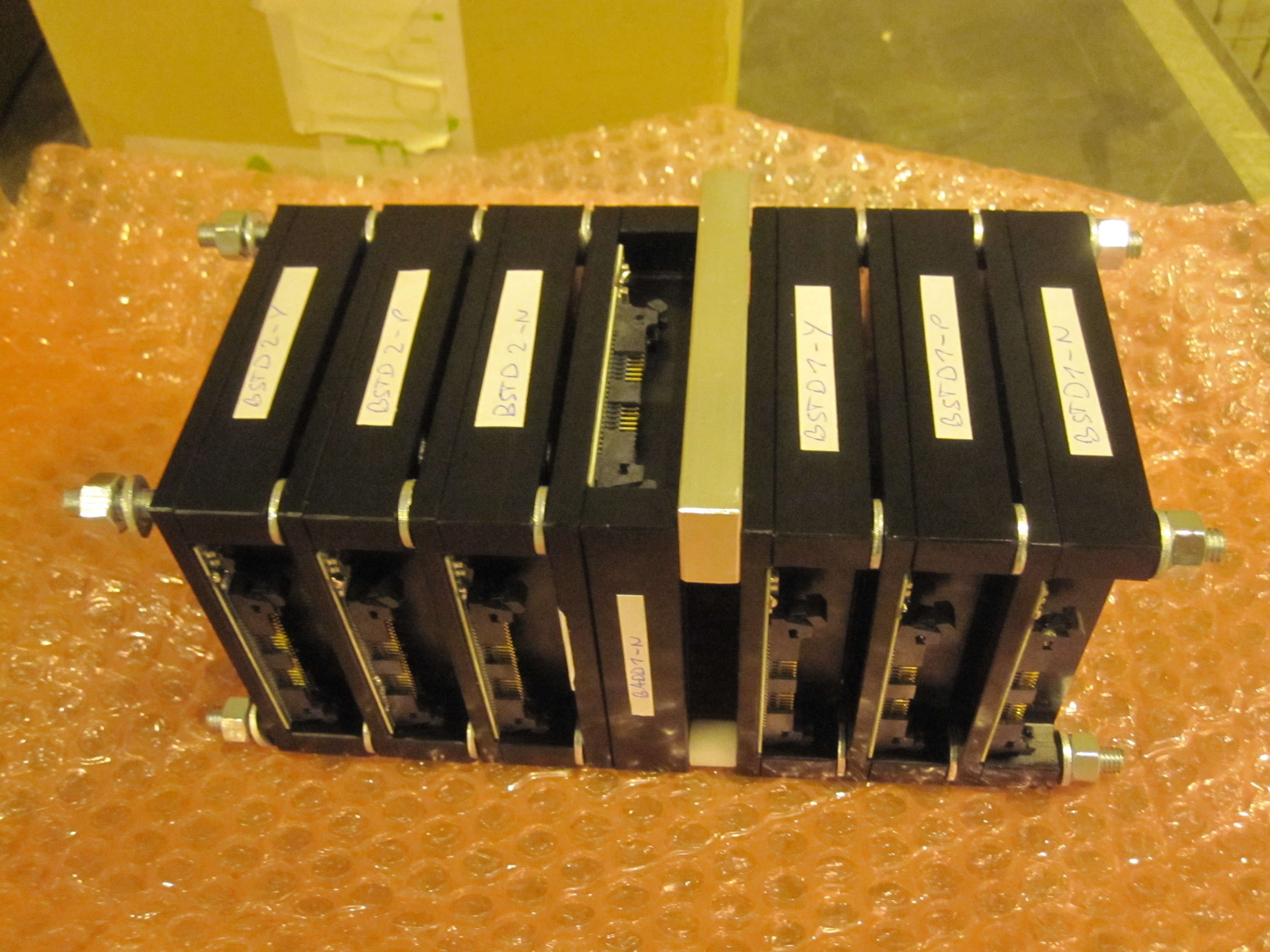 |
| Attachment 2: IMG_5069.JPG
| 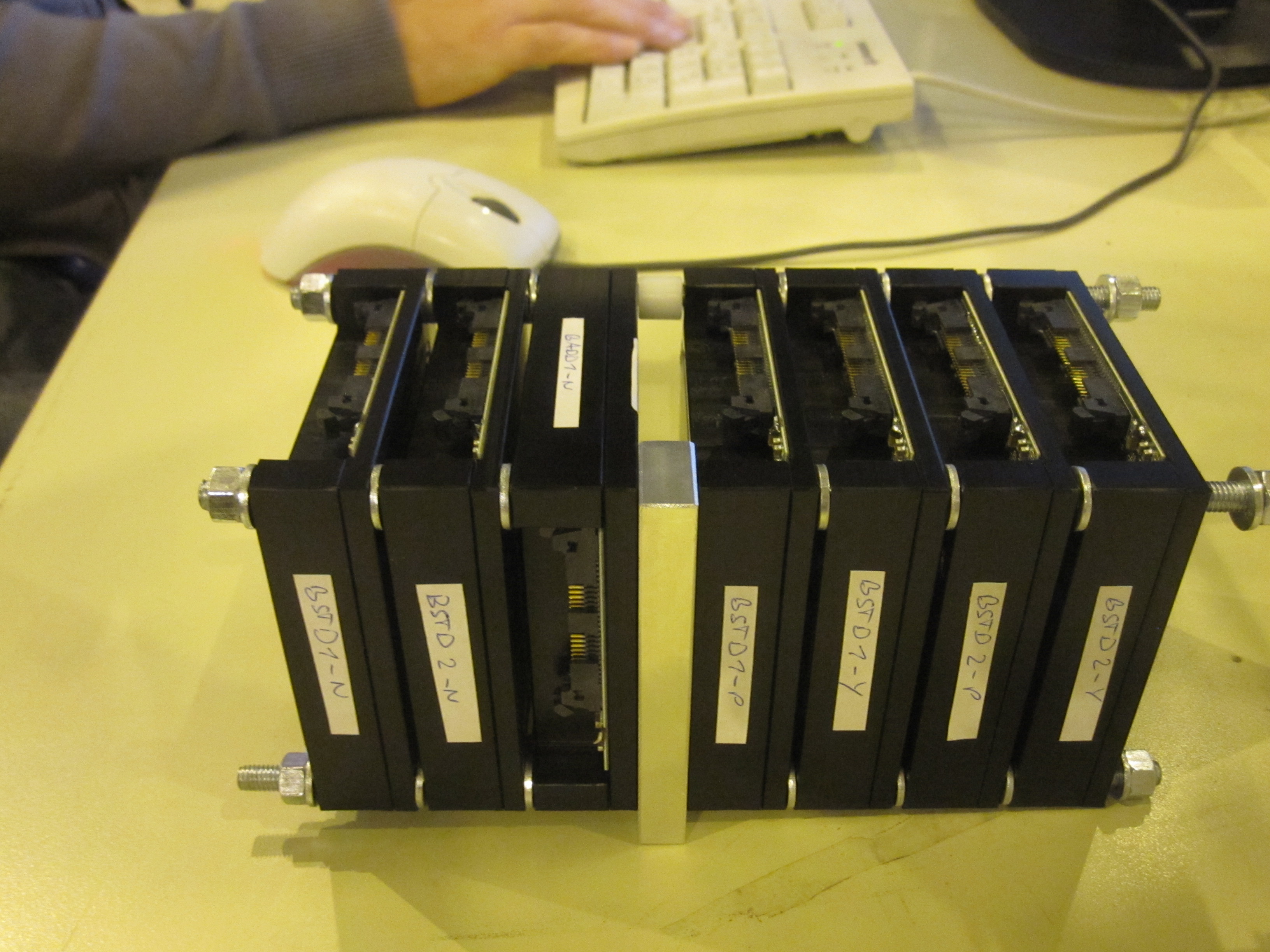 |
|
59
|
Sun Oct 9 11:31:43 2011 |
Manfred Valentan | HPK | HPK BADD stack configuration | | | | | Unknown | Module order:
BADD1-N
BADD2-N
BSTD1-N (for z information)
BADD1-P
BADD1-Y
BADD2-P
BADD2-Y
Talk from Marko on Testbeam with HPK Double Metal Sensors |
| Attachment 1: IMG_5097.JPG
| 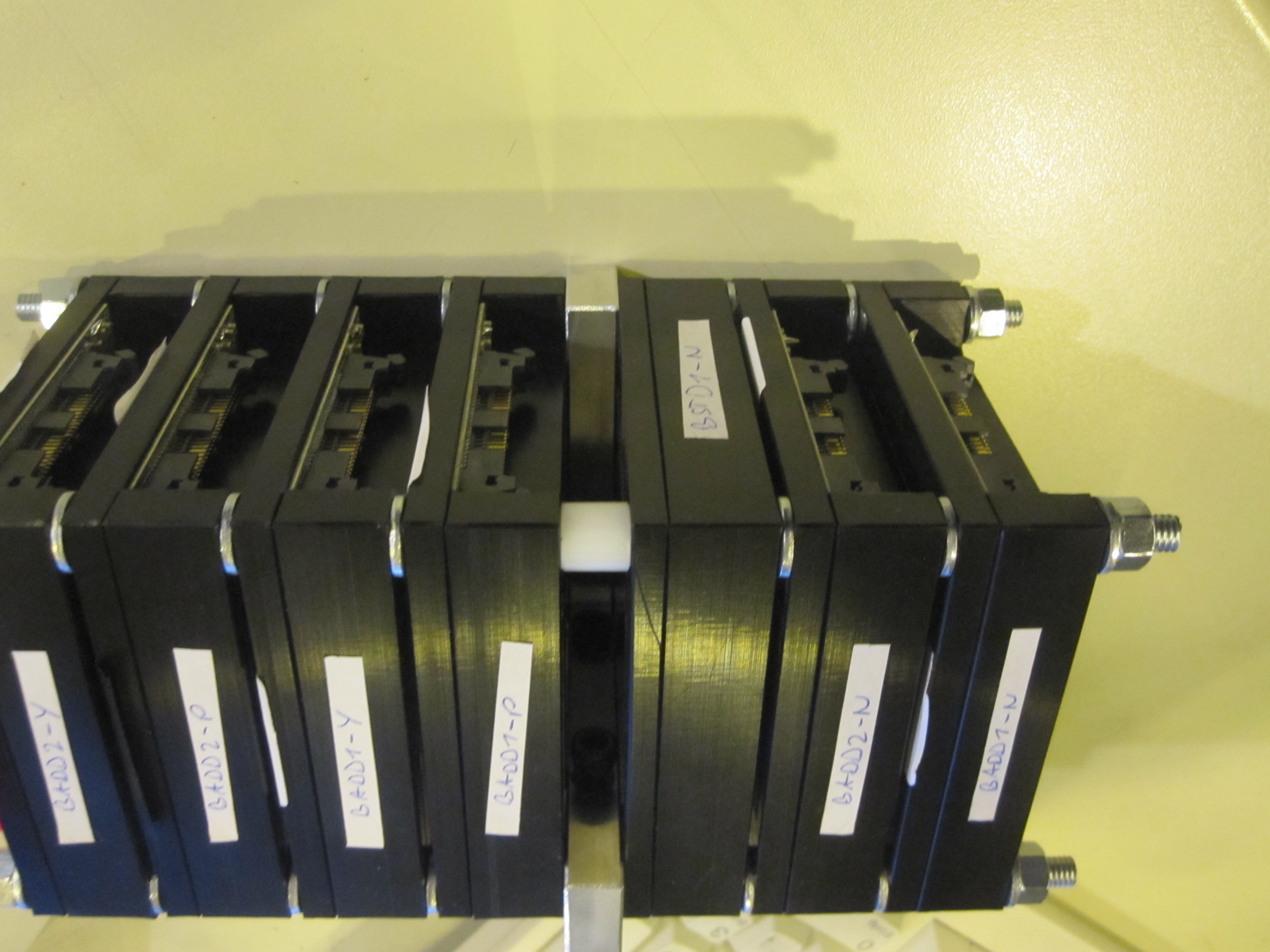 |
|
60
|
Sun Oct 9 13:12:32 2011 |
Karl-Heinz Hoffmann | HPK | baby_add | run022 | 670k | 09.10.2011 13:09:32 | 10.10.2011 00:48:16 | Good | no cooling
beam on; xy table position x=330 y=64
HV=200V Istart_PY=1,9uA; Istart_N=0.27uA
std. I2C settings |
|
61
|
Mon Oct 10 00:50:23 2011 |
Christian Irmler | HPK | baby_add | run023 | 680k | 10.10.2011 00:51:26 | 10.10.2011 09:15:35 | Good | no cooling
beam on; xy table position x=330 y=74
HV=200V Istart_PY=1,9uA; Istart_N=0.27uA
std. I2C settings
same as run021, but taking more events |
|
62
|
Mon Oct 10 10:37:52 2011 |
Christian Irmler | CNM | CNM stack | cal012 | 83800 | 10.10.2011 11:29:55 | 10.10.2011 11:40:55 | Unknown | no cooling
beam on; xy table position x=330 y=64
HV_CNM=20V, HV_BSTD1=200V
Istart_CNM= 28 / 1 uA; Istart_BSTD= 0.12 uA |
|
63
|
Mon Oct 10 12:15:52 2011 |
Manfred Valentan | CNM | CNM stack | run024 | 110000 | 10.10.2011 12:03:58 | 10.10.2011 14:05:56 | Good | no cooling
beam on; xy table position x=320.5 y=79.5
HV_CNM=20V, HV_BSTD1-N=200V
Istart_CNM= 28 / 1 uA; Istart_BSTD= 0.12 uA |
|
65
|
Mon Oct 10 12:32:42 2011 |
Manfred Valentan | CNM | CNM stack configuration | | | | | Unknown | Module order:
CNM-V1 (draws a lot of current, gives only low signal)
BSTD1-N (for height information)
CNM-V2 (works fine)
Attatchment 1: Stack config, beam from right. In the box the stack is mounted with the labelled side of the BSTD1-N module on top (90deg rotated w.r.t. photo)
Attachment 2: the top edges of the sensors coincide -> when the beam hits the last strips of the BSTD, it also hits the pitch adapter region of the CNM sensors |
| Attachment 1: IMG_5102.JPG
| 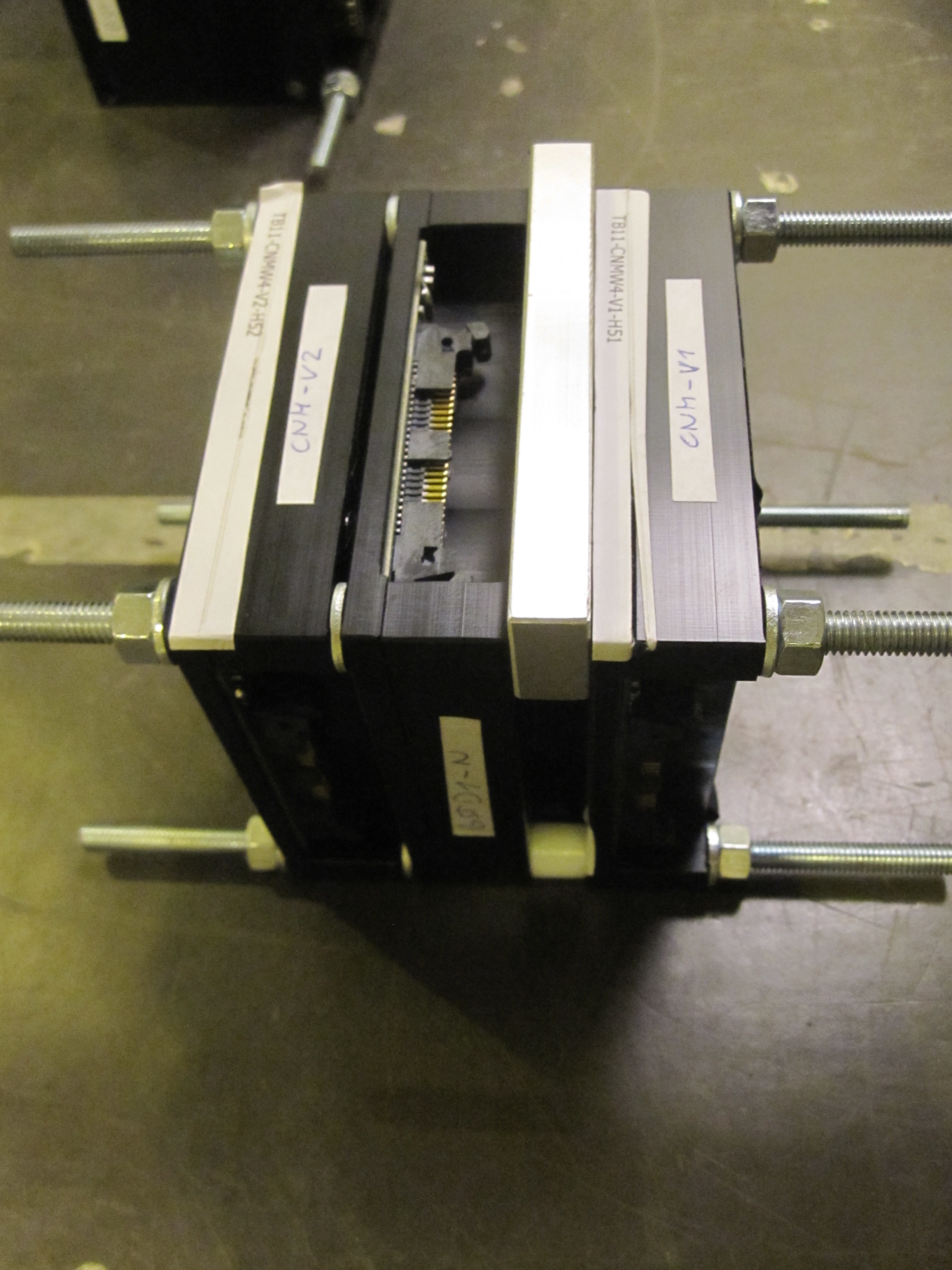 |
| Attachment 2: IMG_5092.JPG
|  |
|
66
|
Mon Oct 10 14:11:53 2011 |
Christian Irmler | CNM | CNM stack | run025 | 110000 | 10.10.2011 14:09:00 | 10.10.2011 16:11:57 | Good | no cooling
beam on; xy table position x=335.5 y=79.5
HV_CNM=20V, HV_BSTD1-N=200V
Istart_CNM= 31 / 1.4 uA; Istart_BSTD= 0.2 uA |
|
67
|
Mon Oct 10 16:26:20 2011 |
Marko Dragicevic | CNM | CNM stack | run026 | 300000 | 10.10.2011 16:23:46 | 10.10.2011 20:30:00 | Good | no cooling
beam on; xy table position x=328 y=69.5
HV_CNM=20V, HV_BSTD1-N=200V
Istart_CNM= 27 / 1.5 uA; Istart_BSTD= 0.2 uA |
|
30
|
Tue Oct 4 21:40:52 2011 |
Christian Irmler | BELLE | Origami stack | cal004 | 83800 | 04.10.2011 21:18:09 | 04.10.2011 21:50:23 | Good | Origami6
HV=+-40V, no cooling
beam on
I=91µA
longterm files (same files used for cal004 and run005):
It-pos-0410112056.txt
It-neg-0410112056.txt
currents and temperatures:
04.10.2011 21:50:13 event=83750 rate=50events/s temp/curr=35.2/-26.1 35.2/-28.7 35.2/-31.4 34.6/022.6 34.6/025.0 34.6/060.4
|
|
31
|
Tue Oct 4 22:11:12 2011 |
Christian Irmler | BELLE | Origami stack | run005 | 330000 | 04.10.2011 22:09:37 | 05.10.2011 09:11:54 | Crap | Origami6
HV=+-40V, no cooling
beam on
Istart=95,2µA
pos: x=306, y=87 (centered)
longterm files (same files used for cal004 and run005):
It-pos-0410112056.txt
It-neg-0410112056.txt
currents and temp:
05.10.2011 09:11:21 event=329649 rate=0events/s temp/curr=33.0/-23.9 33.0/-28.9 33.0/-28.9 32.0/020.1 32.0/025.0 32.0/060.0 |
|
32
|
Wed Oct 5 12:09:00 2011 |
Christian Irmler | BELLE | Origami stack cooled wrong I2C settings | cal005 | 83800 | 05.10.2011 12:04:50 | 05.10.2011 12:37:11 | Crap | This calibration file can not be used, due to wrong I2C settings!
Origami6
HV=+-40V
beam on
CO2 cooling:
preassure @ P_TT_4 = 18.77 bar
mass flow = 0.9 g/s
I=22.45µA
longterm files (same files used for cal005 and run006):
It-pos-0510111122.txt
It-neg-0510111122.txt
currents and temperatures:
05.10.2011 12:05:53 event=2883 rate=37events/s temp/curr=35.0/-05.6 35.0/-06.3 35.0/-06.9 34.2/001.9 34.1/002.5 34.1/022.6
05.10.2011 12:36:53 event=83350 rate=48events/s temp/curr=34.4/-05.5 34.5/-06.1 34.5/-06.9 33.9/001.7 33.9/002.4 33.9/022.5
|
|
33
|
Wed Oct 5 13:00:41 2011 |
Christian Irmler | BELLE | Origami stack cooled | run006 | 24692 | 05.10.2011 12:55:53 | 05.10.2011 14:05:49 | Crap | Run stopped after 24692 events, because all n-side APV failed due to a shortcut of a capacitor (C223) on n-side rebo
Origami6
HV=+-40V
beam on
CO2 cooling:
preassure @ P_TT_4 = 18.77 bar
mass flow = 0.9 g/s
I=22.25µA
longterm files (same files used for cal005 and run006):
It-pos-0510111122.txt
It-neg-0510111122.txt
currents and temperatures:
05.10.2011 12:56:54 event=985 rate=0events/s temp/curr=35.0/-05.5 35.0/-06.1 34.9/-06.9 34.2/001.7 34.3/002.4 34.3/022.3
|
|
34
|
Wed Oct 5 16:43:00 2011 |
Christian Irmler | BELLE | Origami stack cooled | cal006 | 83800 | 05.10.2011 16:40:18 | 05.10.2011 17:12:27 | Good | Origami6
HV=+-40V
beam on
CO2 cooling:
preassure @ P_TT_4 = 18.2 bar
mass flow = 0.9 g/s
I=21.8µA
longterm files (same files used for cal005 and run006):
It-pos-0510111531.txt
It-neg-0510111531.txt
currents and temperatures:
05.10.2011 16:41:21 event=2850 rate=50events/s temp/curr=35.4/-05.8 35.3/-06.3 35.4/-07.2 34.9/002.0 34.9/002.5 34.9/021.7
05.10.2011 17:11:20 event=81237 rate=37events/s temp/curr=35.1/-05.8 35.1/-06.1 35.0/-07.1 34.5/002.0 34.5/002.5 34.5/021.4
|
|
35
|
Wed Oct 5 17:54:09 2011 |
Christian Irmler | BELLE | Origami stack cooled | cal007 | 83800 | 05.10.2011 17:51:57 | | Good | I2C setting modified to improve the shape of the p-side signal --> shaping time reduced, pulse height still low
Origami6
HV=+-40V
beam on
CO2 cooling:
preassure @ P_TT_4 = 18.2 bar
mass flow = 0.9 g/s
I=18.0µA
longterm files
It-pos-0510111531.txt
It-neg-0510111531.txt
currents and temperatures:
05.10.2011 17:53:00 event=2900 rate=47events/s temp/curr=35.3/-05.6 35.3/-06.0 35.3/-06.9 34.6/001.9 34.8/002.2 34.8/020.7
|
|
37
|
Wed Oct 5 19:57:15 2011 |
Christian Irmler | BELLE | Origami stack cooled | run007 | 17845 | 05.10.2011 18:27:51 | 05.10.2011 19:31:43 | Crap | Run stopped after 17845 events, because of bad trigger timing
Origami6
HV=+-40V
beam on
CO2 cooling:
preassure @ P_TT_4 = 18.77 bar
mass flow = 0.9 g/s
I=20µA
longterm files (same files used for cal005 and run006):
It-pos-0510111531.txt
It-neg-0510111531.txt
currents and temperatures:
05.10.2011 19:30:51 event=17469 rate=0events/s temp/curr=35.6/-05.6 35.6/-06.1 35.6/-07.1 35.1/001.9 35.1/002.4 35.1/020.9
|
|
38
|
Wed Oct 5 20:28:00 2011 |
Markus Friedl | BELLE | Origami stack cooled | run008 | 10582 | 05.10.2011 20:25:10 | 05.10.2011 20:45:10 | Good | HV=+-40V,
CO2 cooling: P_TT_4: 18.2 bar, mf=0.9 g/s
beam on
I=20.5µA; new I2C settings; corrected trigger delay (htr)
New run with cold Origami and new I2C settings (shorter peaking time) and hopefully correct timing.
corresponding cal file: cal007 |
|
39
|
Wed Oct 5 20:49:11 2011 |
Markus Friedl | BELLE | Origami stack cooled | run009 | 330k | 05.10.2011 20:46:30 | 06.10.2011 09:12:24 | Good | HV=+-40V,
CO2 cooling: P_TT_4: 18.2 bar, mf=0.9 g/s
beam on; xy table position x=306 y=76.5
I=20.5µA; new I2C settings; corrected trigger delay (htr)
New run with cold Origami and new I2C settings (shorter peaking time) and hopefully correct timing - and centered position in both x and y.
corresponding cal file: cal007
currents:
06.10.2011 09:12:12 event=329714 rate=0events/s temp/curr=35.8/-05.5 36.0/-06.0 35.8/-06.9 33.6/001.7 33.5/002.2 33.6/019.3 |
|
40
|
Thu Oct 6 09:22:34 2011 |
Christian Irmler | BELLE | Origami stack cooled | run010 | 330k | 05.10.2011 20:46:30 | 06.10.2011 09:12:24 | Good | HV=+-40V,
CO2 cooling: P_TT_4: 18.2 bar, mf=0.9 g/s
beam on; xy table position x=306 y=76.5
I=20.5µA; corrected trigger delay (htr)
New run with cold Origami and same I2C setting as used 2010, with longer shaping time for p-side
centered position in both x and y.
corresponding cal file: cal006
currents:
06.10.2011 09:20:29 event=988 rate=0events/s temp/curr=35.8/-05.5 36.0/-06.0 35.8/-06.7 33.5/001.7 33.6/002.0 33.6/019.3
|
|
41
|
Thu Oct 6 15:57:51 2011 |
Christian Irmler | BELLE | Origami stack cooled | cal008 | 83800 | 06.10.2011 15:53:20 | 06.10.2011 16:25:29 | Good | HV=+-40V,
CO2 cooling: P_TT_4: 18.2 bar, mf=1 g/s
beam on; xy table position x=306 y=76.5
I=19.5µA; old I2C settings; corrected trigger delay (htr); adjusted front-end voltages
Temp. at pipe inlet (K7) = -14°C
Temp. at pipe outlet (K8) = -17°C
Before this run, the front-end voltages (+2.5 and +1.25) were readjusted so that the nominal values appear on MAMBO. (Previously, both were about 50mV too low.) Not sure if this makes a big difference, let's see.
currents:
06.10.2011 15:54:24 event=2901 rate=36events/s temp/curr=35.5/-05.6 35.5/-06.0 35.4/-06.9 34.9/001.9 35.0/002.2 35.0/019.6
06.10.2011 16:24:25 event=81350 rate=50events/s temp/curr=34.9/-05.6 34.9/-06.1 34.9/-06.9 34.3/001.7 34.3/002.2 34.3/019.6
|
|
42
|
Thu Oct 6 17:36:47 2011 |
Christian Irmler | BELLE | Origami stack cooled | run011 | 180000 | 06.10.2011 17:06:38 | 07.10.2011 00:04:06 | Good | HV=+-40V,
CO2 cooling: P_TT_4: 18.2 bar, mf=1 g/s
beam on; xy table position x=260.8 y=60.25
I=19.4µA; old I2C settings; corrected trigger delay (htr); adjusted front-end voltages
beam focused on APV #0 of p- and n-side, respectively
currents:
06.10.2011 17:07:41 event=639 rate=3events/s temp/curr=35.2/-05.6 35.2/-06.0 35.2/-06.9 34.5/001.7 34.5/002.2 34.5/019.6 |
|
43
|
Fri Oct 7 00:20:15 2011 |
Christian Irmler | BELLE | Origami stack cooled | run012 | 250k | 07.10.2011 00:15:54 | 07.10.2011 09:13:55 | Good | HV=+-40V,
CO2 cooling: P_TT_4: 18.2 bar, mf=1 g/s
beam on; xy table position x=352 y=89
I=19.1µA; old I2C settings; corrected trigger delay (htr); adjusted front-end voltages
beam focused on APV #3 of p- and n-side, respectively
currents:
07.10.2011 00:16:57 event=987 rate=0events/s temp/curr=34.3/-05.6 34.3/-06.0 34.3/-06.9 33.3/001.7 33.5/002.2 33.3/019.2
07.10.2011 09:13:42 event=249992 rate=0events/s temp/curr=33.6/-05.5 33.5/-06.0 33.6/-06.7 32.5/001.7 32.5/002.0 32.5/018.8
|
|
44
|
Fri Oct 7 10:13:12 2011 |
Christian Irmler | BELLE | Origami stack cooled | run013 | 185k | 07.10.2011 10:02:20 | 07.10.2011 17:17:32 | Good | HV=+-40V,
CO2 cooling: P_TT_4: 18.2 bar, mf=1 g/s
beam on; xy table position x=321 y=99
I=18.6µA; old I2C settings; corrected trigger delay (htr); adjusted front-end voltage
The beam is directly focused onto APV chip #2 of n-side, so that it hits the area underneath chip and cooling pipe.
On p-side this location is attached to chip #4, which currently can not be read out, hence we only get data for the n-side.
currents:
07.10.2011 10:03:22 event=979 rate=0events/s temp/curr=33.2/-05.6 33.3/-06.0 33.2/-06.7 32.2/001.6 32.2/002.0 32.2/018.7
07.10.2011 17:17:18 event=184992 rate=0events/s temp/curr=33.8/-05.6 33.8/-06.0 33.8/-06.9 32.7/001.7 32.7/002.0 32.7/018.7
|
|
46
|
Fri Oct 7 18:40:07 2011 |
Christian Irmler | BELLE | Origami stack cooled | cal009 | 83800 | 07.10.2011 18:35:04 | 07.10.2011 19:31:51 | Good | Origami6
HV=+-40V,
CO2 cooling: P_TT_4: 14.9 bar, mf=0.9 g/s
beam on; xy table position x=306 y=76.5
I=18.6µA; old I2C settings; corrected trigger delay (htr); adjusted front-end voltages
CO2 pressure reduced to 14.9 bar --> temp is about 4K colder
Temp. at pipe inlet (K7) = -18°C
Temp. at pipe outlet (K8) = -21.8°C
used multi6 config instead of single hit config (cern11_origami_cooled2_multi6.cfg)
currents:
07.10.2011 18:36:07 event=1581 rate=31events/s temp/curr=33.9/-05.3 33.9/-05.6 33.9/-06.6 32.8/001.4 32.8/001.9 32.8/018.1 |
|
47
|
Fri Oct 7 19:35:14 2011 |
Christian Irmler | BELLE | Origami stack cooled | run014 | 90k | 07.10.2011 19:49:26 | 07.10.2011 23:26:52 | Good | Origami6
HV=+-40V,
CO2 cooling: P_TT_4: 14.9 bar, mf=0.9 g/s
beam on; xy table position x=306 y=74.5
centered
I=17.8µA; old I2C settings; corrected trigger delay (htr); adjusted front-end voltages
CO2 pressure reduced to 14.9 bar --> temp is about 4K colder
Temp. at pipe inlet (K7) = -18°C
Temp. at pipe outlet (K8) = -21.8°C
currents:
07.10.2011 23:26:21 event=89786 rate=0events/s temp/curr=33.0/-05.3 33.0/-05.8 33.0/-06.6 31.9/001.4 32.0/001.9 31.9/017.7
|
|
48
|
Sat Oct 8 00:14:37 2011 |
Christian Irmler | BELLE | Origami stack | run015 | 180111 | 08.10.2011 00:06:41 | 08.10.2011 08:24:38 | Good | Origami6
HV=+-40V,
no cooling
beam on; xy table position x=306 y=74.5
Istart=57µA;
std. I2C settings
centered
currents:
8.10.2011 00:07:43 event=991 rate=0events/s temp/curr=33.0/-15.4 33.0/-17.3 33.0/-17.7 31.9/011.5 31.9/013.2 32.0/040.20
...
08.10.2011 06:32:34 event=179710 rate=0events/s temp/curr=33.1/-22.1 33.0/-25.6 33.1/-22.6 31.9/018.2 31.8/021.7 31.9/048.5
08.10.2011 06:33:28 event=180105 ***WARNING*** Error detected in APV 0, subevent 2. Event discarded, reset sent.
Permanent APV errors at several (all p-side, some n-side) APV chips after 180105 events, which could not be recovered by software resets. After restart of run, all APVs where alive again, hence hardware reset and I2C reconfiguration after 5 or 10 consecutive APV errors should be added to TUXDAQ software.
After APV errors occured, the cummulative bias current decrised from 78µA to 54µA. This effect can occures whenever the digital part of the APV is switched between idle and full operation. It seems that this is a thermal effect, caused by the slightly higher power consumption of the digital part of the chips.
|
|
49
|
Sat Oct 8 09:30:44 2011 |
Christian Irmler | BELLE | Cooling plant tests | | | 08.10.2011 09:30 | | Unknown | Software run with 6 samples to ensure that APV chips dissipate full power.
DAQ data not saved, bias current monitored
new longterm files:
It-neg-0810110926.txt
It-pos-0810110926.txt |
| Attachment 1: biascurrent_cooling_test1.jpg
| 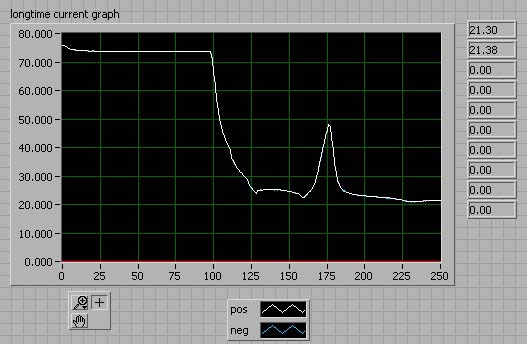 |
| Attachment 2: temp_cooling_test1.jpg
| 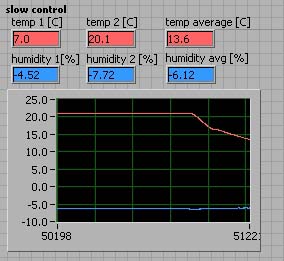 |
|
72
|
Mon Feb 20 17:17:27 2012 |
Christian Irmler | BELLE | Origami Module #4 | run100 | 50k | 20.02.2012 17:07:21 | 20.02.2012 17:17:22 | Good | Sr90, large scintillator, HVret @ Origami open
Origami Mod. #4
HV=+-40V, Ibias=2,03µA
CO2 cooling on, Tin=-16°C, Tout=-16,7°C
standard I²C settings for uncooled APV chips.
Lab measurement with new dark box but old, large scintillator.
20.02.2012 17:08:27 event=5771 ***WARNING*** Error detected in APV 6, subevent 0. Event discarded, reset sent. --> APV 6 recovered afterwards |
|
73
|
Mon Feb 20 17:20:20 2012 |
Christian Irmler | BELLE | Origami Module #4 | cal100 | 50k | 20.02.2012 17:19:03 | 20.02.2012 17:29:58 | Good | Sr90, large scintillator, HVret @ Origami open
Origami Mod. #4
HV=+-40V, Ibias=2,03µA
CO2 cooling on, Tin=-16°C, Tout=-16,7°C
standard I²C settings for uncooled APV chips.
Lab measurement with new dark box but old, large scintillator.
Calibration run for run100. |
|
74
|
Mon Feb 20 17:27:02 2012 |
Christian Irmler | BELLE | Origami Module #4 | run101 | 24497 | 20.02.2012 17:33:33 | 20.02.2012 17:38:21 | Good | Sr90, large scintillator, HVret @ Origami open
Origami Mod. #4
HV=+-40V, Ibias=2,03µA
CO2 cooling on, Tin=-16°C, Tout=-16,7°C
I²C settings for cooled APV chips --> same as used in run010.
Lab measurement with new dark box but old, large scintillator.
CO2 empty after 24497 events --> run stopped |
|
75
|
Wed Feb 22 12:15:11 2012 |
Christian Irmler | BELLE | Origami Module #4 | run102 | 170k | 22.02.2012 12:31:08 | 22.02.2012 13:03:27 | Good | same as run101
Sr90, large scintillator, HVret @ Origami open
Origami Mod. #4
HV=+-40V, Ibias=1,8µA
CO2 cooling on, Tin=-20.2°C, Tout=-21.3°C
I²C settings for cooled APV chips --> same as used in run010
e:\cvi-projects\apvdaq_fadc\origami6_V2_multi6_cooled.cfg
Lab measurement with new dark box but old, large scintillator.
CO2 empty after 24497 events --> run stopped --> no corresponding calibration available, but for rought analysis cal100 can be used for this run, too |
|
76
|
Wed Feb 22 13:17:34 2012 |
Christian Irmler | BELLE | Origami Module #4 | cal102 | 83800 | 22.02.2012 13:11:30 | 22.02.2012 13:25:18 | Good | Sr90, large scintillator, HVret @ Origami open
Origami Mod. #4
HV=+-40V, Ibias=1,8µA
CO2 cooling on, Tin=-20.2°C, Tout=-21.3°C
I²C settings for cooled APV chips --> same as used in run010
e:\cvi-projects\apvdaq_fadc\origami6_V2_single_cooled.cfg
Lab measurement with new dark box but old, large scintillator. |
|
77
|
Wed Feb 22 13:37:11 2012 |
Christian Irmler | BELLE | Origami Module #4 | run103 | 100k | 22.02.2012 13:35:08 | 22.02.2012 13:54:08 | Crap | Sr90, large scintillator,
HVret @ Origami closed
HVret @ SMU connected
Origami Mod. #4
HV=+-40V, Ibias=1,6µA
CO2 cooling on, Tin=-20.5°C, Tout=-21.5°C
I²C settings for cooled APV chips --> same as used in run010
e:\cvi-projects\apvdaq_fadc\origami6_V2_multi6_cooled.cfg
Lab measurement with new dark box but old, large scintillator
Wires between HV connectors ground and HVret conntact at the mambo were open --> no HVret conntection between module and SMUs!
Moreover the SMU Inv. Nr. 545-078 has either an unstable output or problems with the current measurement. |
|
78
|
Wed Feb 22 16:21:23 2012 |
Christian Irmler | BELLE | Origami Module #4 | run104 | 100k | 22.02.2012 16:22:34 | 22.02.2012 16:41:26 | Good | Sr90, large scintillator,
Origami Mod. #4
HV=+-40V, Ibias=1,6µA
CO2 cooling on, Tin=-20.5°C, Tout=-21.5°C
I²C settings for cooled APV chips --> same as used in run010
e:\cvi-projects\apvdaq_fadc\origami6_V2_multi6_cooled.cfg
Lab measurement with new dark box but old, large scintillator
SMU: +HV=Inv.Nr. 545-77 -HV=Inv.Nr. 540-702
HVret configuration:
0 ... switch open / not connected
1 ... switch closed / connected
| SMU |
Dock Box |
J5 |
J6 |
J7 |
| 0 |
1 |
1 |
0 |
1 |
J7... HV ret @ hybrid
| APV |
0 |
1 |
2 |
3 |
4 |
5 |
6 |
7 |
| avg noise |
2.564 |
2.124 |
2.094 |
2.200 |
1.696 |
1.666 |
1.870 |
1.888 |
| CM noise |
1.7 |
0.9 |
0.9 |
1.3 |
4.0 |
4.1 |
4.1 |
4.2 |
|
| Attachment 1: run104.jpg
| 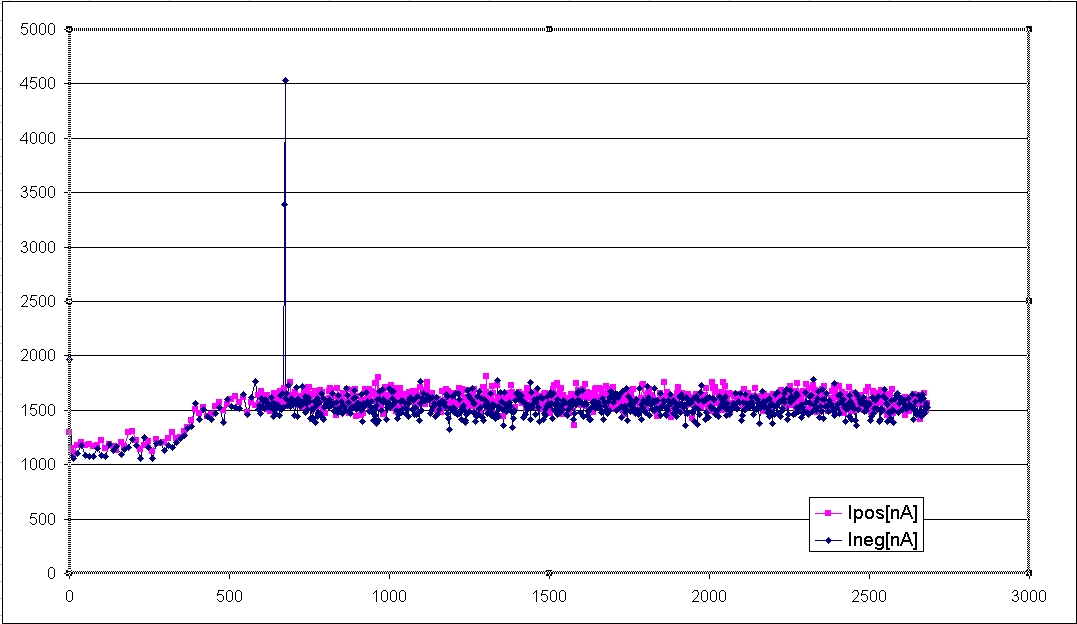 |
| Attachment 2: run104_current.xls
|
|
79
|
Wed Feb 22 16:49:29 2012 |
Christian Irmler | BELLE | Origami Module #4 | cal104 | 83800 | 22.02.2012 16:51:13 | 22.02.2012 17:02:11 | Good | Sr90, large scintillator,
Origami Mod. #4
HV=+-40V, Ibias=1,6µA
CO2 cooling on, Tin=-20.5°C, Tout=-21.5°C
I²C settings for cooled APV chips --> same as used in run010
e:\cvi-projects\apvdaq_fadc\origami6_V2_multi6_cooled.cfg
Lab measurement with new dark box but old, large scintillator
SMU: +HV=Inv.Nr. 545-77 -HV=Inv.Nr. 540-702
HVret configuration:
0 ... switch open / not connected
1 ... switch closed / connected
| SMU |
Dock Box |
J5 |
J6 |
J7 |
| 0 |
1 |
1 |
0 |
1 |
J7... HV ret @ hybrid
|
|
80
|
Wed Feb 22 17:25:34 2012 |
Christian Irmler | BELLE | Origami Module #4 | cal105 | 83800 | 22.02.2012 17:23:13 | 22.02.2012 17:34:27 | Good | Sr90, large scintillator,
Origami Mod. #4
HV=+-40V, Ibias=1,6µA
CO2 cooling on, Tin=-20.5°C, Tout=-21.5°C
I²C settings for cooled APV chips --> same as used in run010
e:\cvi-projects\apvdaq_fadc\origami6_V2_single_cooled.cfg
Lab measurement with new dark box but old, large scintillator
SMU: +HV=Inv.Nr. 545-77 -HV=Inv.Nr. 540-702
HVret configuration:
0 ... switch open / not connected
1 ... switch closed / connected
| SMU |
Dock Box |
J5 |
J6 |
J7 |
| 0 |
1 |
1 |
0 |
0 |
J7... HV ret @ hybrid
Same as cal104, but now J7 open
|
|
81
|
Wed Feb 22 17:38:29 2012 |
Christian Irmler | BELLE | Origami Module #4 | run105 | 100k | 22.02.2012 17:39:10 | 22.02.2012 17:58:01 | Good | Sr90, large scintillator,
Origami Mod. #4
HV=+-40V, Ibias=1,6µA
CO2 cooling on, Tin=-20.5°C, Tout=-21.5°C
I²C settings for cooled APV chips --> same as used in run010
e:\cvi-projects\apvdaq_fadc\origami6_V2_multi6_cooled.cfg
Lab measurement with new dark box but old, large scintillator
SMU: +HV=Inv.Nr. 545-77 -HV=Inv.Nr. 540-702
HVret configuration:
0 ... switch open / not connected
1 ... switch closed / connected
| SMU |
Dock Box |
J5 |
J6 |
J7 |
| 0 |
1 |
1 |
0 |
0 |
J7... HV ret @ hybrid
Same as run104, but now J7 open
Again spikes in bias current!
|
| Attachment 1: run105.jpg
| 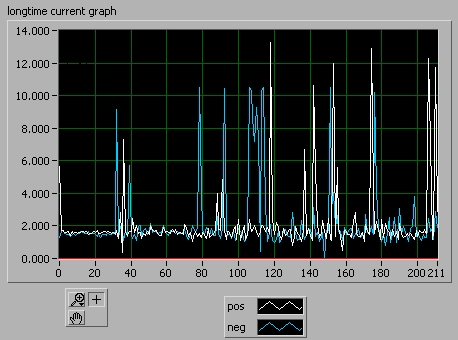 |
|
82
|
Wed Feb 22 18:10:29 2012 |
Christian Irmler | BELLE | Origami Module #4 | run106 | 50k | 22.02.2012 17:39:10 | 22.02.2012 18:23:47 | Good | Sr90, large scintillator,
Origami Mod. #4
HV=+-40V, Ibias=1,6µA
CO2 cooling on, Tin=-20.5°C, Tout=-21.5°C
I²C settings for cooled APV chips --> same as used in run010
e:\cvi-projects\apvdaq_fadc\origami6_V2_multi6_cooled.cfg
Lab measurement with new dark box but old, large scintillator
SMU: +HV=Inv.Nr. 545-77 -HV=Inv.Nr. 540-702
HVret configuration:
0 ... switch open / not connected
1 ... switch closed / connected
| SMU |
Dock Box |
J5 |
J6 |
J7 |
| 0 |
1 |
0 |
0 |
0 |
J7... HV ret @ hybrid
Same as run105, but now J5 and J7 open
|
| Attachment 1: run106.jpg
| 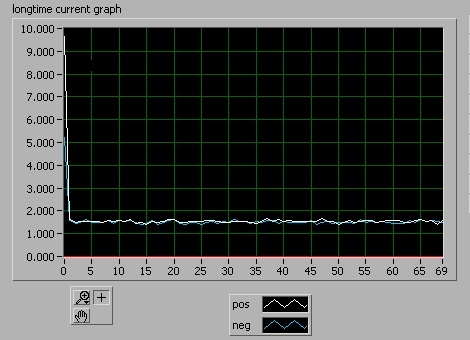 |
|
83
|
Wed Feb 22 18:32:24 2012 |
Christian Irmler | BELLE | Origami Module #4 | run107 | 50k | 22.02.2012 18:30:33 | 22.02.2012 18:40:11 | Good | Sr90, large scintillator,
Origami Mod. #4
HV=+-40V, Ibias=1,6µA
CO2 cooling on, Tin=-20.5°C, Tout=-21.5°C
I²C settings for cooled APV chips --> same as used in run010
e:\cvi-projects\apvdaq_fadc\origami6_V2_multi6_cooled.cfg
Lab measurement with new dark box but old, large scintillator
SMU: +HV=Inv.Nr. 545-77 -HV=Inv.Nr. 540-702
HVret configuration:
0 ... switch open / not connected
1 ... switch closed / connected
| SMU |
Dock Box |
J5 |
J6 |
J7 |
| 0 |
1 |
0 |
0 |
1 |
J7... HV ret @ hybrid
Same as run106, but now J7 closed
APV pedestals slightly unstable. |
| Attachment 1: run107_apv5_raw_data.jpg
| 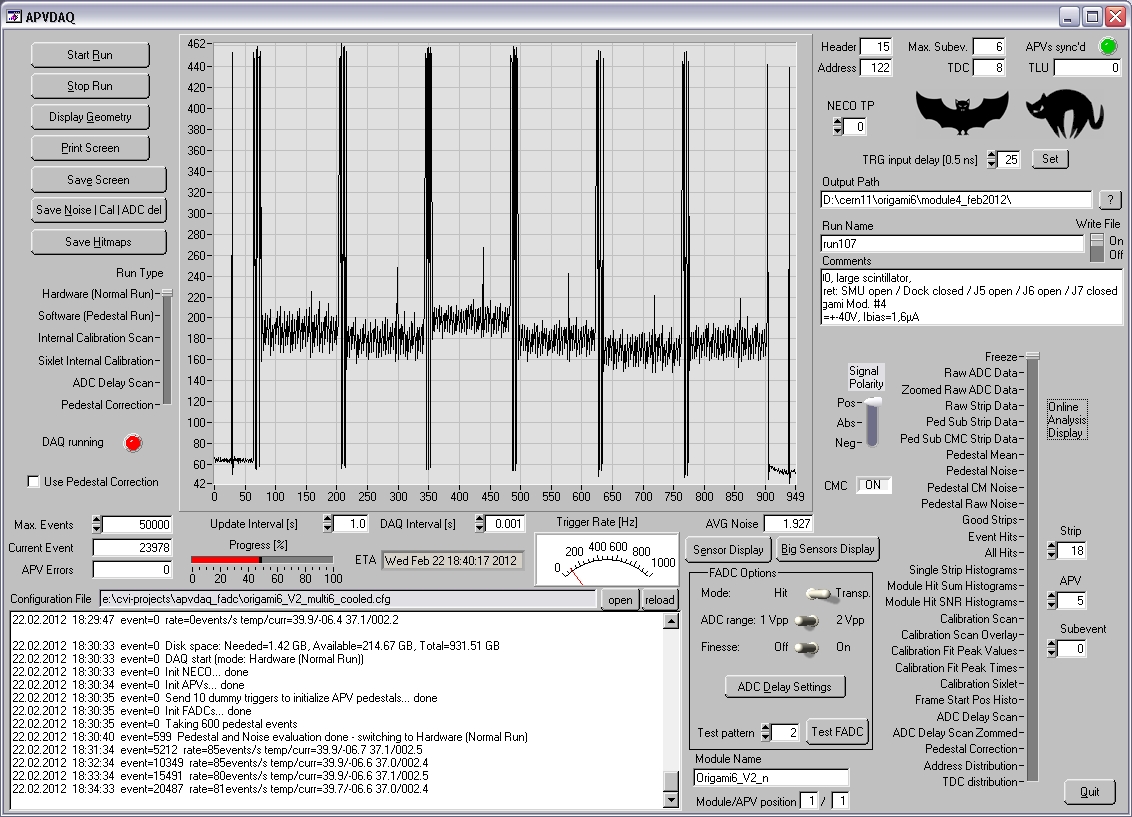 |
| Attachment 2: run107.jpg
|  |
|
84
|
Mon Mar 5 17:34:43 2012 |
Christian Irmler | BELLE | Origami Module #4 | run108 | 100k | | 05.03.2012 16:24:12 | Unknown | Sr90, large scintillator,
Origami Mod. #4
HV=+-40V, Ibias=1,9µA
CO2 cooling on, Tin=-20.5°C, Tout=-21.5°C
I²C settings for cooled APV chips
e:\cvi-projects\apvdaq_fadc\origami6_V2_multi6_cooled.cfg
Lab measurement with new dark box but old, large scintillator
SMU: +HV=Inv.Nr. 545-77 -HV=Inv.Nr. 540-702
HVret configuration:
0 ... switch open / not connected
1 ... switch closed / connected
| SMU |
Dock Box |
J5 |
J6 |
J7 |
| 0 |
0 (now isolated) |
1 |
0 |
1 |
J7... HV ret @ hybrid |
|
85
|
Mon Mar 5 17:35:31 2012 |
Christian Irmler | BELLE | Origami Module #4 | cal108 | 83800 | 05.03.2012 16:47:51 | 05.03.2012 17:05:16 | Unknown | Sr90, large scintillator,
Origami Mod. #4
HV=+-40V, Ibias=1,9µA
CO2 cooling on, Tin=-20.5°C, Tout=-21.5°C
I²C settings for cooled APV chips
e:\cvi-projects\apvdaq_fadc\origami6_V2_multi6_cooled.cfg
Lab measurement with new dark box but old, large scintillator
SMU: +HV=Inv.Nr. 545-77 -HV=Inv.Nr. 540-702
HVret configuration:
0 ... switch open / not connected
1 ... switch closed / connected
| SMU |
Dock Box |
J5 |
J6 |
J7 |
| 0 |
0 (now isolated) |
1 |
0 |
1 |
J7... HV ret @ hybrid |
| Attachment 1: run108-109.jpg
| 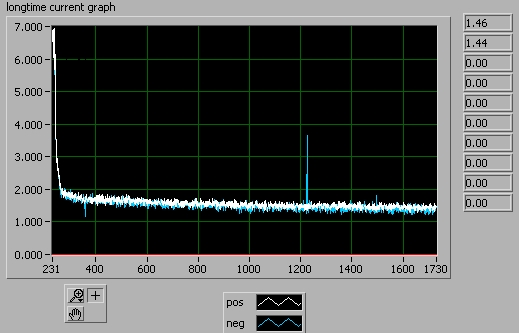 |
|
86
|
Mon Mar 5 17:36:46 2012 |
Christian Irmler | BELLE | Origami Module #4 | run109 | 100k | 05.03.2012 17:36:19 | 05.03.2012 17:55:24 | Unknown | Sr90, large scintillator,
Origami Mod. #4
HV=+-40V, Ibias=1,9µA
CO2 cooling on, Tin=-20.5°C, Tout=-21.5°C
I²C settings for cooled APV chips
e:\cvi-projects\apvdaq_fadc\origami6_V2_multi6_cooled.cfg
Lab measurement with new dark box but old, large scintillator
SMU: +HV=Inv.Nr. 545-77 -HV=Inv.Nr. 540-702
HVret configuration:
0 ... switch open / not connected
1 ... switch closed / connected
| SMU |
Dock Box |
J5 |
J6 |
J7 |
| 0 |
0 (now isolated) |
1 |
1 |
1 |
J7... HV ret @ hybrid |
|
87
|
Mon Mar 5 18:08:02 2012 |
Christian Irmler | BELLE | Origami Module #4 | cal109 | 83800 | 05.03.2012 18:07:40 | 05.03.2012 18:18:32 | Unknown | Sr90, large scintillator,
Origami Mod. #4
HV=+-40V, Ibias=1,9µA
CO2 cooling on, Tin=-20.5°C, Tout=-21.5°C
I²C settings for cooled APV chips
e:\cvi-projects\apvdaq_fadc\origami6_V2_multi6_cooled.cfg
Lab measurement with new dark box but old, large scintillator
SMU: +HV=Inv.Nr. 545-77 -HV=Inv.Nr. 540-702
HVret configuration:
0 ... switch open / not connected
1 ... switch closed / connected
| SMU |
Dock Box |
J5 |
J6 |
J7 |
| 0 |
0 (now isolated) |
1 |
1 |
1 |
J7... HV ret @ hybrid |
|
88
|
Mon Mar 5 18:41:23 2012 |
Christian Irmler | BELLE | Origami Module #4 | run110 | 100k | 05.03.2012 18:45:21 | 05.03.2012 19:04:30 | Unknown | Sr90, large scintillator,
Origami Mod. #4
HV=+-40V, Ibias=1,9µA
CO2 cooling on, Tin=-20.5°C, Tout=-21.5°C
I²C settings for cooled APV chips
e:\cvi-projects\apvdaq_fadc\origami6_V2_multi6_cooled.cfg
Lab measurement with new dark box but old, large scintillator
SMU: +HV=Inv.Nr. 545-77 -HV=Inv.Nr. 540-702
HVret configuration:
0 ... switch open / not connected
1 ... switch closed / connected
| SMU |
Dock Box |
J5 |
J6 |
J7 |
| 0 |
0 (now isolated) |
1 |
1 |
0 |
J7... HV ret @ hybrid |
|
89
|
Mon Mar 5 19:06:41 2012 |
Christian Irmler | BELLE | Origami Module #4 | cal110 | 83800 | 05.03.2012 19:05:52 | 05.03.2012 19:17:01 | Unknown | Sr90, large scintillator,
Origami Mod. #4
HV=+-40V, Ibias=1,9µA
CO2 cooling on, Tin=-20.5°C, Tout=-21.5°C
I²C settings for cooled APV chips
e:\cvi-projects\apvdaq_fadc\origami6_V2_multi6_cooled.cfg
Lab measurement with new dark box but old, large scintillator
SMU: +HV=Inv.Nr. 545-77 -HV=Inv.Nr. 540-702
HVret configuration:
0 ... switch open / not connected
1 ... switch closed / connected
| SMU |
Dock Box |
J5 |
J6 |
J7 |
| 0 |
0 (now isolated) |
1 |
1 |
0 |
J7... HV ret @ hybrid |
|
90
|
Mon Mar 5 19:27:56 2012 |
Christian Irmler | BELLE | Origami Module #4 | run111 | 50k | 05.03.2012 19:26:28 | | Unknown | Sr90, large scintillator,
Origami Mod. #4
HV=+-40V, Ibias=1,30µA
CO2 cooling on, Tin=-20.5°C, Tout=-21.5°C
I²C settings for cooled APV chips
e:\cvi-projects\apvdaq_fadc\origami6_V2_multi6_cooled.cfg
Lab measurement with new dark box but old, large scintillator
SMU: +HV=Inv.Nr. 545-77 -HV=Inv.Nr. 540-702
HVret configuration:
0 ... switch open / not connected
1 ... switch closed / connected
| SMU |
Dock Box |
J5 |
J6 |
J7 |
| 0 |
0 (now isolated) |
1 |
0 |
1 |
J7... HV ret @ hybrid
same as run108
Noise of p-side APVs in run108 was very high --> repeat measurement! |
|
91
|
Wed Mar 7 15:12:42 2012 |
Christian Irmler | BELLE | Origami Module #4 | run112 | 100k | 07.03.2012 15:13:18 | 07.03.2012 14:31:07 | Unknown | Sr90, small (new) scintillator, new trigger unit
Origami Mod. #4
HV=+-40V, Ibias=1,6µA
CO2 cooling on, Tin=-19,6°C, Tout=-21.3°C
I²C settings for cooled APV chips
e:\cvi-projects\apvdaq_fadc\origami6_V2_multi6_cooled.cfg
SMU: +HV=Inv.Nr. 545-77 -HV=Inv.Nr. 540-702
HVret configuration:
0 ... switch open / not connected
1 ... switch closed / connected
| SMU |
Dock Box |
J5 |
J6 |
J7 |
| 0 |
0 (now isolated) |
1 |
1 |
0 |
J7... HV ret @ hybrid |
|
92
|
Wed Mar 7 15:44:25 2012 |
Christian Irmler | BELLE | Origami Module #4 | cal112 | 83800 | 07.03.2012 15:42:53 | | Unknown | Sr90, small (new) scintillator, new trigger unit
Origami Mod. #4
HV=+-40V, Ibias=1,6µA
CO2 cooling on, Tin=-19,6°C, Tout=-21.3°C
I²C settings for cooled APV chips
e:\cvi-projects\apvdaq_fadc\origami6_V2_single_cooled.cfg
SMU: +HV=Inv.Nr. 545-77 -HV=Inv.Nr. 540-702
HVret configuration:
0 ... switch open / not connected
1 ... switch closed / connected
| SMU |
Dock Box |
J5 |
J6 |
J7 |
| 0 |
0 (now isolated) |
1 |
1 |
0 |
J7... HV ret @ hybrid |
|
93
|
Wed Mar 7 16:03:30 2012 |
Christian Irmler | BELLE | Origami Module #4 | run113 | 100k | 07.03.2012 16:07:34 | 07.03.2012 16:30:48 | Unknown | Sr90, small (new) scintillator, new trigger unit
Origami Mod. #4
HV=+-40V, Ibias=1,6µA
CO2 cooling on, Tin=-19,6°C, Tout=-21.3°C
I²C settings for cooled APV chips
e:\cvi-projects\apvdaq_fadc\origami6_V2_multi6_cooled.cfg
SMU: +HV=Inv.Nr. 545-77 -HV=Inv.Nr. 540-702
HVret configuration:
0 ... switch open / not connected
1 ... switch closed / connected
| SMU |
Dock Box |
J5 |
J6 |
J7 |
| 0 |
0 (now isolated) |
1 |
1 |
0 |
J7... HV ret @ hybrid
same configuration as run112 but now the step motors of the xz table are powered. |
| Attachment 1: run112-113.jpg
|  |
|
94
|
Wed Mar 7 16:58:36 2012 |
Christian Irmler | BELLE | Origami Module #4 | cal113 | 100k | 07.03.2012 16:40:04 | 07.03.2012 16:57:08 | Unknown | Sr90, small (new) scintillator, new trigger unit
Origami Mod. #4
HV=+-40V, Ibias=1,6µA
CO2 cooling on, Tin=-19,6°C, Tout=-21.3°C
I²C settings for cooled APV chips
e:\cvi-projects\apvdaq_fadc\origami6_V2_single_cooled.cfg
SMU: +HV=Inv.Nr. 545-77 -HV=Inv.Nr. 540-702
HVret configuration:
0 ... switch open / not connected
1 ... switch closed / connected
| SMU |
Dock Box |
J5 |
J6 |
J7 |
| 0 |
0 (now isolated) |
1 |
1 |
0 |
J7... HV ret @ hybrid
same configuration as run112 but now the step motors of the xz table are powered. |
|